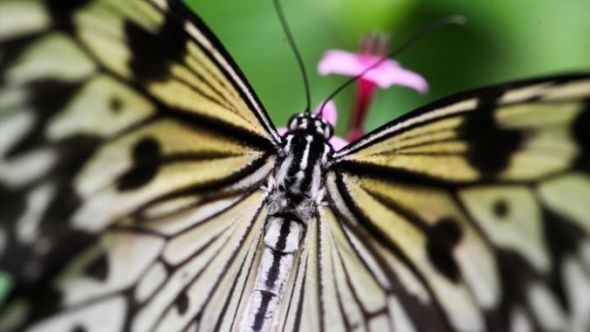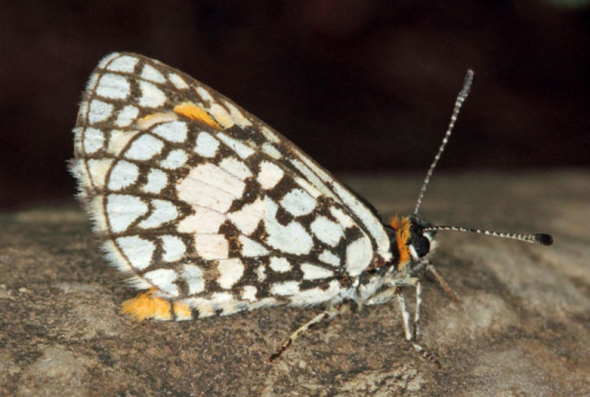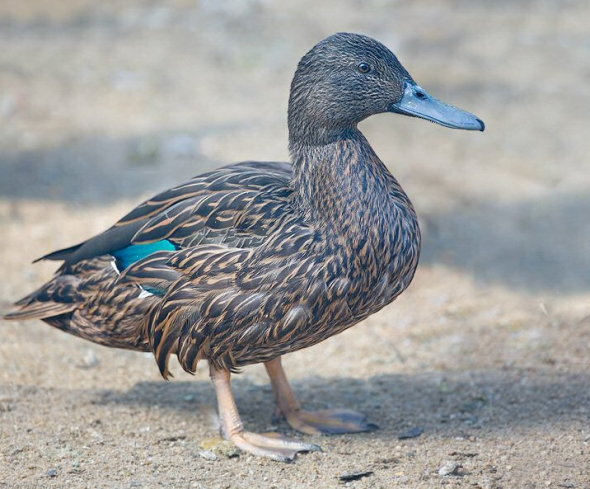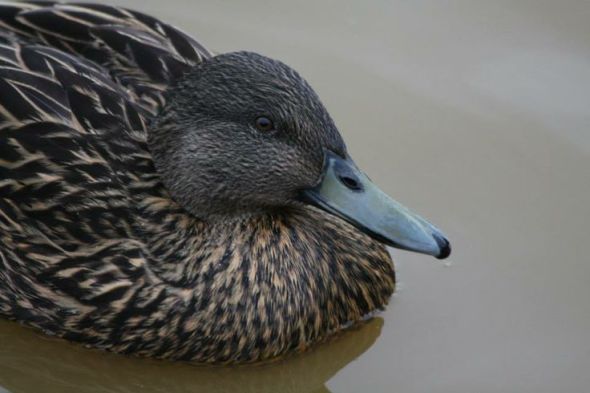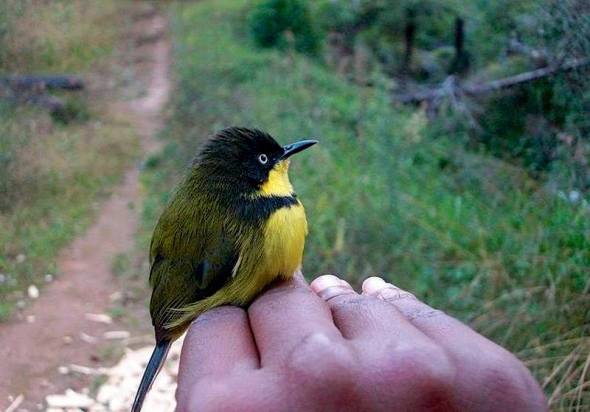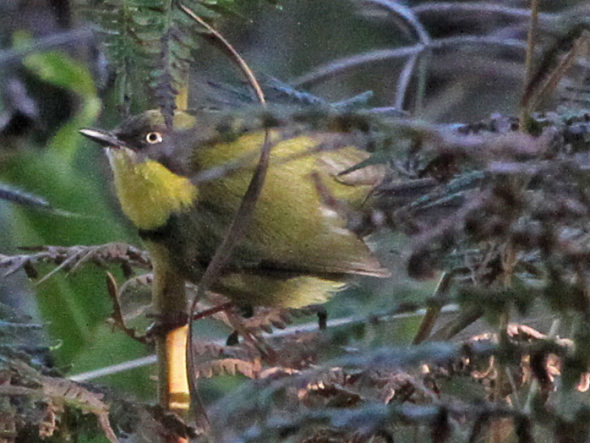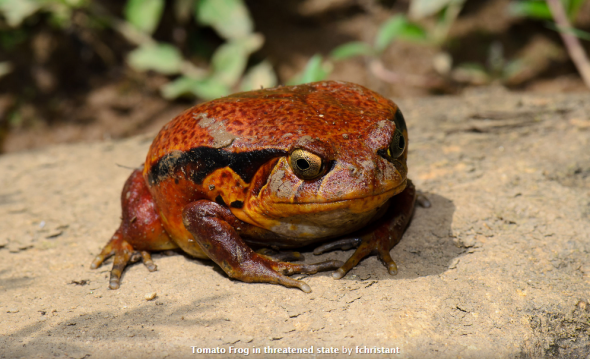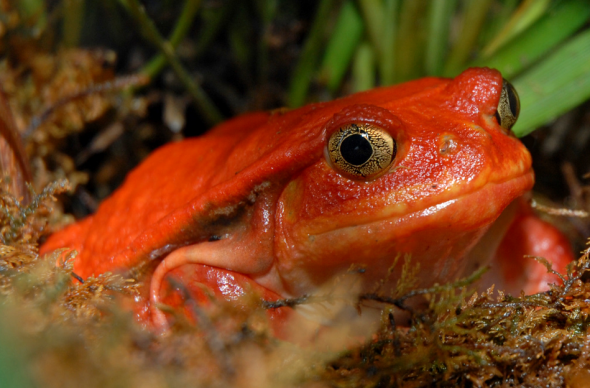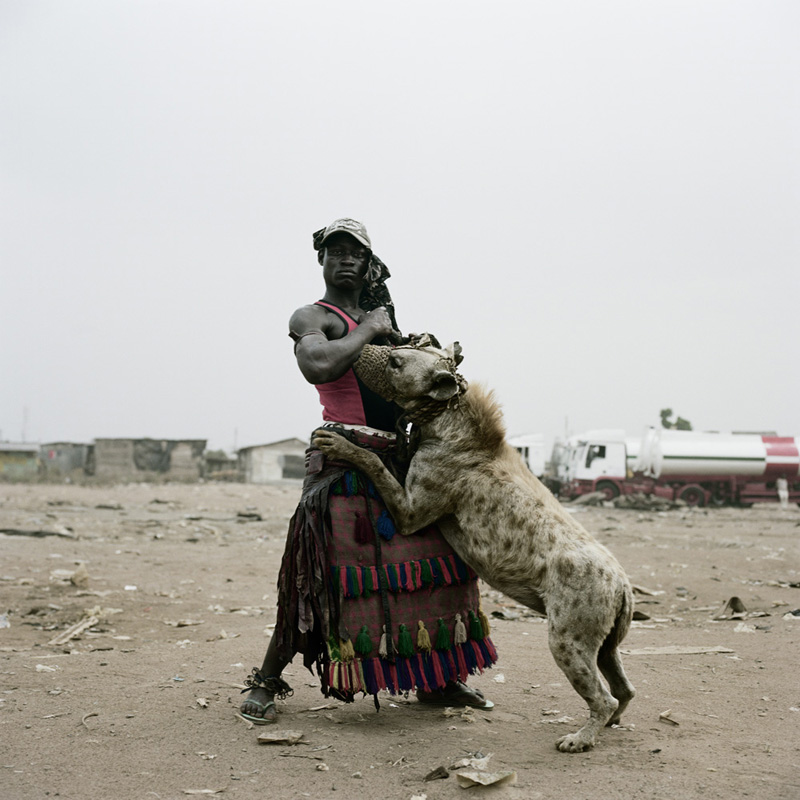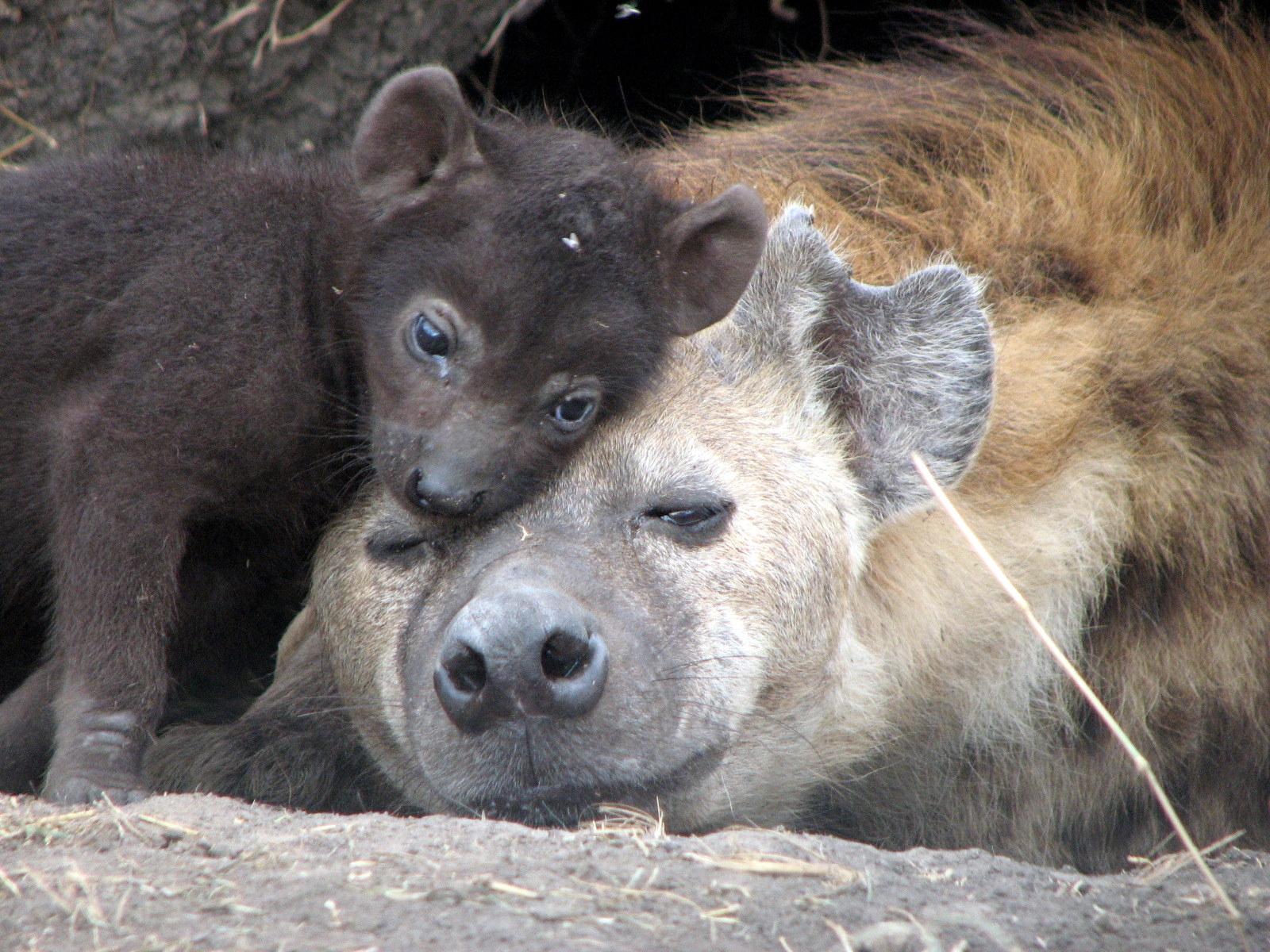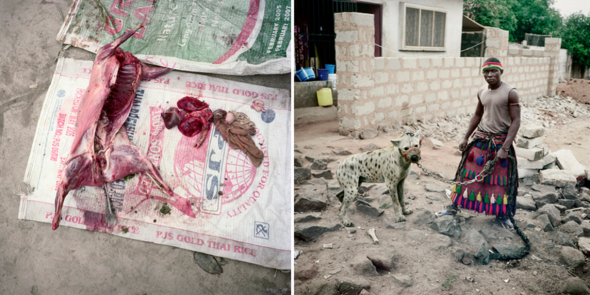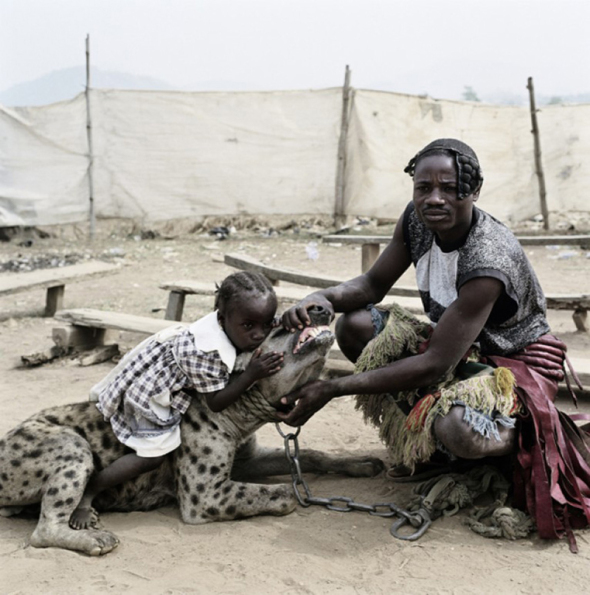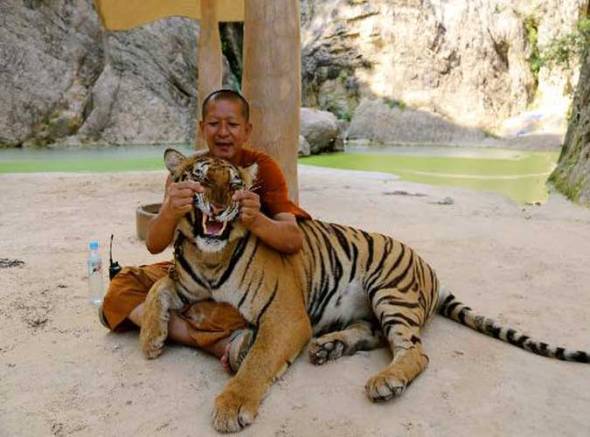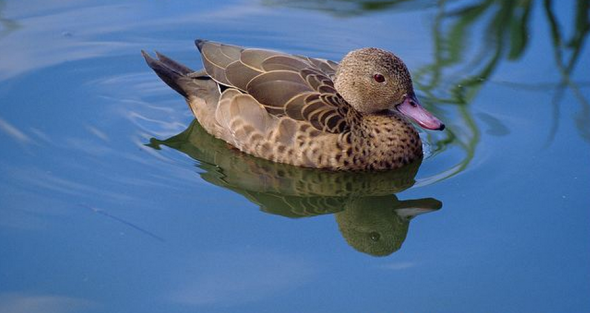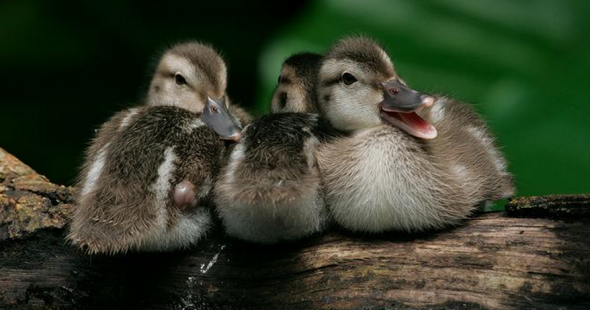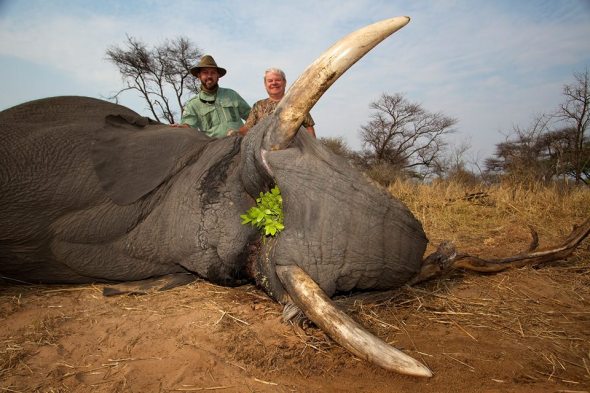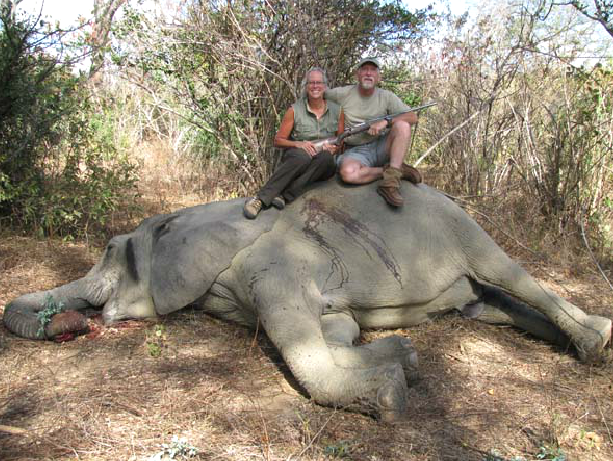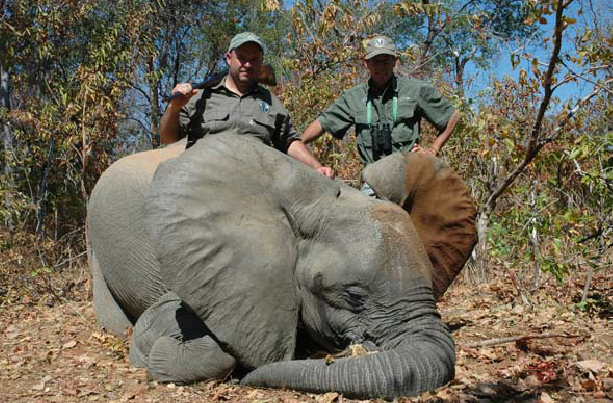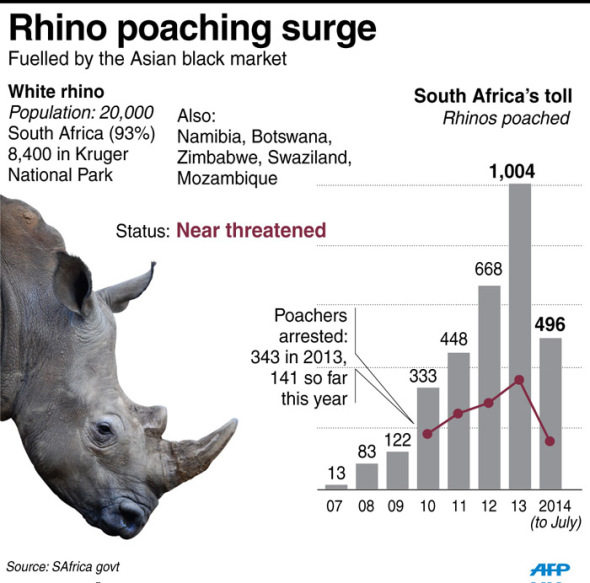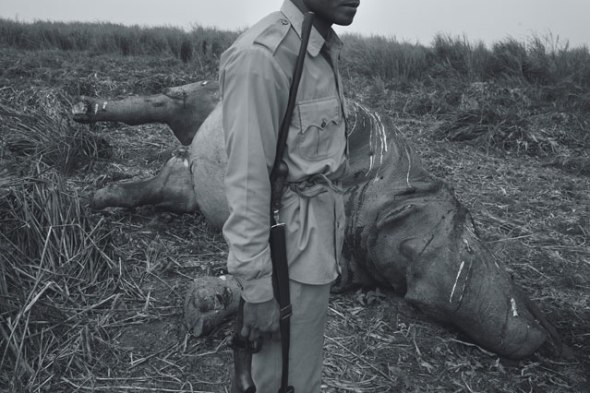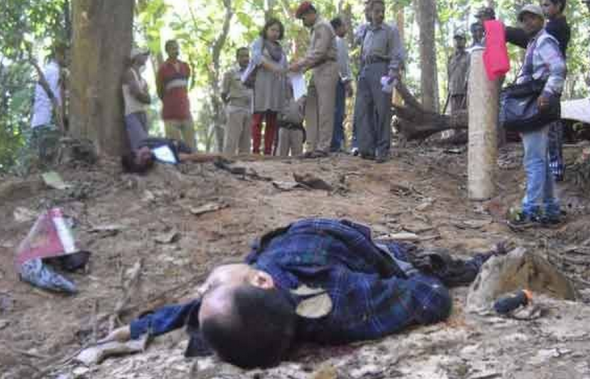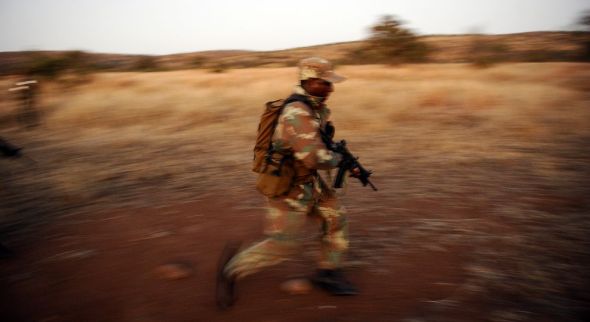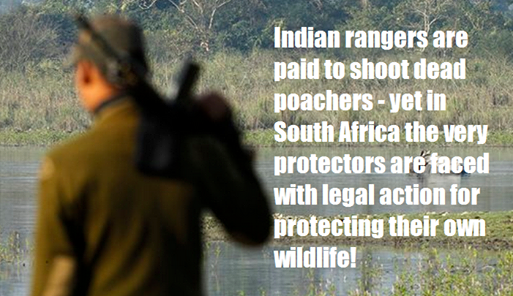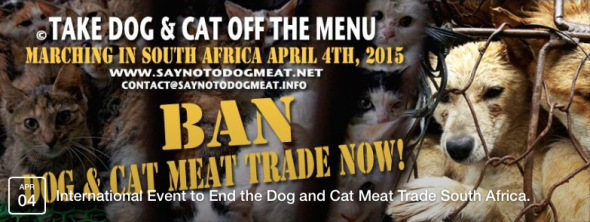Endangered Species Monday: Alaena margaritacea
Endangered Species Monday: Alaena margaritacea
This Mondays (ESP) Endangered Species Watch Post we take a brief glance at South Africa’s most endangered species of butterfly. Generically identified as Alaena margaritacea the species was primarily located by Dr Harry Eltringham FRS (18 May 1873, South Shields - 26 November 1941, from Stroud) whom was an English histologist and entomologist who specialized in Lepidoptera. (Image: unknown photographer)
Dr Eltringham had been awarded a Master of Science (Cantab and Oxon) and a Doctor of Science (Oxon). He worked at the Hope Department of Entomology. He wrote Histological and Illustrative Methods for Entomologists OCLC 03655743, The Senses of Insects, London, Methuen (1933) and on Lepidoptera Nymphalidae: Subfamily Acraeinae. Lepidopterorum Catalogus 11:1-65 with Karl Jordan (1913) and On specific and mimetic relationships in the genus Heliconius.
Commonly known as the Wolkberg Zulu butterfly and identified back in 1929 the species stands within ‘threatened’ status of which has qualified for vulnerable listing. Endemic to a wee small town of South Africa the butterfly is from the family Lycaenidae which is the (second largest family of butterflies on the planet), hosting some 5,000 species and, constitutes 30% of the butterfly species on Planet Earth.
A. margaritacea is known to inhabit grassy slopes adjoining afromontane forest in the Haenertsburg area of the Limpopo Province near the Wolkberg. Populations trends are currently not known however we do know that flora alien (non-native botanical specimens) are placing the only two known colonies of Wolkberg Zulu butterflies within that area in [extreme danger], back in 2013-2014 a second colony was located to the joy of many.
To give you a clearer image of just how threatened the species is (any such habitat disturbance within their known range could see extinction occur within days rather than months or years).
However its not all doom and gloom yet. There is hope, even within a country that’s habitat is slowly being destroyed by agriculture, aquaculture and urbanization. Three years ago the species was believed to have gone extinct. However an intensive search was mounted by members of the Lepidopterists’ Society of Africa.
Despite being identified back in 1929 the species has only ever been known to occur in one single location: a small town in northern South Africa in Polokwane within the town of Haenertsberg. The wingspan is 24–27 mm for males and 28–30 mm for females. Adults are on wing from late December to early January. There is one generation per year. Lepidopterists’ Society of Africa spokesperson Naturalist Andre Coetzer stated that as yet none has been able to locate a third colony (2014).
The species has a habit of settling very frequently and for very long periods … which makes searching for the butterfly a tedious, challenging task involving long treks over rocky terrain while combing and scrutinizing the grass and undergrowth. And there’s another problem: the Wolkberg Zulu has an extremely short flight period (the ‘winged’ adult part of its life cycle) – just three weeks in December and early January that also happens to fall right in the middle of the rainy season. All of this easily explains why no one has found another colony of this elusive and endangered butterfly in the last 80 years. Until now… Please read more here to learn more on the butterfly. For fuether information please contact the organisation directly - click here
A typical liquid diet consists of nectar from flowers but also eat tree sap, dung, pollen, or rotting fruit. They are attracted to sodium found in salt and sweat too.
The word Lepidoptera is derived from the Latin words “lepido” meaning scale, and “ptera” meaning wings. Lepidoptera literally means scale wings, referring to the minute scale-like structures on the wings of both butterflies and moths. We are unsure as to how many Wolkberg Zulu Butterflies actually live within the two colonies, there could be anything from 100-200 (random guess). Which is why we please ask all our readers to make a donation to the Lepidopterists Society of Africa to secure more projects.
Image: Wolkberg Zulu butterfly
For now we remain skeptical and whether there will be more colonies located. We are praying for more colonies to be located. The Department of Environmental Affairs must do more to protect their lands from invasive botanical species to ensure future survival of all flora and fauna. Not forgetting establishing a funding program, protected and manned area to secure their South Africa’s critically endangered butterfly. Failing this we’ll lose South Africa’s most rarest butterfly known to humankind.
Threats
The only known threat to be placing the species in direct danger are that of alien botanical species. Habitat destruction is not known to be problematic within the region although agriculture and human disturbance could very well become a problem. For more information on alien invasive species please see click here for further information.
Unfortunately folks we do not have a video to show of this amazing video but hope one is made available soon. Video footage of this amazing yet so very rare butterfly would be wonderful to view. Please don’t forget to check out the links above and, donate if you can to the group Lepidopterists’ Society of Africa.
Thank you for reading.
Dr Jose C. Depre.
Chief Environmental and Botanical Scientist.
Endangered Species Friday: Anas melleri.
Endangered Species Friday: Anas melleri
This Fridays Endangered Species watch Post (ESP) focuses on a very undocumented bird known scientifically as Anas melleri and commonly known as the Meller’s Duck.
The Meller’s Duck was identified back in 1865 by lawyer and Doctor Philip Lutley Sclater FRS FRGS FZS FLS (4 November 1829 – 27 June 1913) was an English lawyer and zoologist. In zoology, he was an expert ornithologist, and identified the main zoogeographic regions of the world. He was Secretary of the Zoological Society of London for 42 years, from 1860–1902.
Listed as endangered, populations are on the decline quite extensively throughout the birds entire range. A. melleri qualified for (endangered status) back in 2012. Endemic to Madagascar the species can be located on the eastern and northern high plateau. Populations are isolated on massifs on the western edges of the plateau. Documented reports from the west of the island most probably refer to vagrant or most likely wandering birds.
Its been alleged that at some time from 2012 re-introduced populations on the island of Mauritius are now extinct - however there remains no hard hitting evidence to back this claim up, conservationists have stated that a ‘probable extinction’ occurred on the island.
The Meller’s Duck was once described as common on the Africans island of Madagascar, unfortunately there is no evidence to back this claim up either. Conservationists that visit the island regularly from International Animal Rescue Foundation Africa and have documented on the Meller’s Duck previously have been informed by locals that the species is rarely seen, however huntsmen will peddle the meat of ducks into local villages.
International Animal Rescue Foundation Africa stated the species had been documented by explorers as ‘densely populated’ on the island from the 1500’s to 1800’s. Sadly since human colonization increased on the island after the French protectorate from the mid 1800’s human population growth on the island has attributed to current decline of the species. Over the last twenty years human population has skyrocketed significantly which unfortunately has led to vast swathes of habitat destroyed and illegal poaching to occur.
“All birds seem to be within a single subpopulation which is probably continuing to decline rapidly. Extinctions are likely to occur in under a few years, five years max”…
Conservation teams like the local communities have confirmed that the species is sadly no longer common ‘anywhere’ other than forested areas of the northwest and in the wetlands around Lake Alaotra where there are some breeding pairs, but where many non-breeders collect, with up to 500 birds present. All birds seem to be within a single subpopulation which is probably continuing to decline rapidly. Extinctions are likely to occur in under a few years, five years max!.
Population sizes are incredibly depressed. We now know the species numbers at 2,000 to 5,000 individuals which equates to exactly 1,300 to 3,300 mature individuals. Should pet collection, poaching, habitat destruction Etc continue at the rate it is extinctions will as explained occur in roughly (730 days). That’s how serious the problem is.
Conservation projects are underway of which the IARF have contributed funding towards the Durrell Wildlife Conservation Trust. The species occurs in at least seven protected areas, and is known from 14 Important Bird Areas (78% of eastern Malagasy wetland IBAs) (ZICOMA 1999). No regular breeding sites are known. In 2007, there was a drive to increase the number of institutions that keep the species in captivity, and as such the bird is a nationally protected species.
Conservation actions planned: Protect remaining areas of least-modified wetlands at Lake Alaotra. Conduct wide-scale status surveys of eastern wetlands. Study its ecology to identify all causes of its decline and promote development of captive breeding programmes.
(Please note all new monetary and equipment grants provided by IARFA from August of last year to present has yet to be updated into the main transparency register onsite)
Meller’s duck breeds apparently during most of the year except May–June on Madagascar, dependent on local conditions; the Mauritian population has been recorded to breed in October and November (however as explained is likely to now be extinct). Unlike most of their closer relatives—with the exception of the African black duck—they are fiercely territorial during the breeding season; furthermore, pairs remain mated until the young are.
Threats
A. melleri is still classed as the largest species of wildfowl found in Madagascar and is widely hunted and trapped for subsistence (and for sport). Interviews with hunters at Lake Alaotra suggest c.450 individuals are taken each year, constituting 18% of the global population.
Long term deforestation of the central plateau, conversion of marshes to rice-paddies and degradation of water quality in rivers and streams, as a result of deforestation and soil erosion, have probably contributed to its decline too. Widespread exotic carnivorous fishes, notably Micropterus salmoides (although this may now be extinct) and Channa spp., may threaten young and cause desertion of otherwise suitable habitat.
Its decline on Mauritius has been attributed to hunting, pollution and introduced rats and mongooses as well as possible displacement by introduced Common Mallard Anas platyrhynchos. Pairs are very territorial and susceptible to human disturbance.
Extinction is likely to occur of which continued protective captivity projects must increase for the birds future survival and re-introduction elsewhere.
The video below depicts a Meller’s Duck captivity project in Germany.
Thank you for reading.
Dr Jose C. Depre
http://www.speakupforthevoiceless.org
Please donate to SAYNOTODOGMEAT.NET < Click the link - [email protected]
Endangered Species Monday: Apalis flavigularis
Endangered Species Monday: Apalis flavigularis
This Monday’s endangered species article I focus again (with a very frustrated mind) on yet another threatened species of bird which is, one of my favorites. Scientifically named as the Apalis flavigularis the species is listed as endangered. Commonly identified as the Yellow-throated Apalis the bird was primarily discovered back in 1893 by Captain George Ernest Shelley (15 May 1840 – 29 November 1910). Captain George Ernest Shelley was an English geologist and ornithologist. He was a nephew of the poet Percy Bysshe Shelley.
Captain Shelley was educated at the Lycée de Versailles and served a few years in the Grenadier Guards.
His books included A Monograph of the Cinnyridae, or Family of Sun Birds, A Handbook to the Birds of Egypt (1872) and The Birds of Africa (5 volumes, 1896 - 1912).
Endemic to Malawi a landlocked country in southeastern Africa, is defined by its topography of highlands split by the Great Rift Valley and enormous Lake Malawi. Bordering Mozambique, Zimbabwe and, Zambia. Populations are decreasing quite rampantly throughout the birds range.
A. flavigularis is restricted within its range to the following mountainous regions Mt Mulanje, Mt Zomba, Mt Malosa in south east Malawi. From 1983 the species was once considered common within its habitat however has since declined to depressing levels. Some reports have stated that the species may-have occurred within the Mozambican region of Mount Chiperone however, there are no records to back these claims up.
Further reports suggest that the species does not occur within similar regions of Malawi or adjacent to Mozambique. Back in 2008 surveys suggested there was a mere 7,900 individuals in the cedar forest on Mt Mulanje suggesting that the species population on Mulanje may have likely exceeded to some 10,000 individuals.
In all the total population count to-date stands now at some 2,300-4,400 individuals. The species is banded within the number of 2,500-9,999 individuals. This equates to 1,667-6,666 mature individuals, rounded here to 1,500-7,000 mature individuals.
Threats
The rapidly increasing human population in south-eastern Malawi, swelled by huge numbers of refugees during the last 20 years, is posing a serious threat to the survival of mid-altitude forest in the lowest parts of its range - the lower slopes of Mt Mulanje, in particular, are steadily being deforested for agriculture and timber. In 1995-1996, severe fires destroyed some indigenous forest on Mt Zomba.
Fires cause a proliferation of invasive plants, in particular Rubus ellipticus, on Mt Mulanje, however presence of the species was found to be positively correlated with R. ellipticus by Mzumara et al. (2011) so this may not present a significant threat. The “then” Malawian president Bingu wa Mutharika granted a Japanese minerals company a concession covering the whole of Mount Mulanje to mine rare earths in 2011, and it was reported that Tuchila plateau had been clear-felled and exploratory drilling had begun in late 2011.
It is uncertain whether the subsequent change in head of state following the death of the president in April 2012 will affect the mining concession.
The new head of state President Peter Mutharika seems to have made some small changes regarding mining however nothing really major to show improvements to the natural wildlife or countries only endemic bird. Back in June 2015 the Malawian Congress Party - Law maker for Kasunga East, Madaliso Kazombo criticized mining contracts in the country for lacking transparency saying its high time locals had shares in the in the companies of foreign investors. Read more >here<
During past and to date debates the countries mining operations continue to threaten wildlife and waterholes that much of the countries large taxa depend on. Back in 2014 a uranium mine sludge discharged placed countless species of animals in danger of immediate death - not forgetting the countries most endangered bird - Apalis flavigularis.
Toxic substances flowed from the tailings pond at the Kayelekera Uranium Mine into Lake Malawi 50 kilometers (30 miles) downstream include waste uranium rock, acids, arsenic and other chemicals used in processing the uranium ore. Lake Malawi in eastern Africa is the world’s ninth largest lake, some 580 kilometers (360 miles) long, and 75 kilometers (47 miles) wide at its widest point. It extends into Malawi’s neighbors Tanzania and Mozambique.
The lake provides water for drinking and domestic use to millions of Malawians and wildlife. Part of the lake is protected as a national park, and it is inhabited by more than 850 cichlid fish species found nowhere else on Earth.
Back in 2013, Paladin Africa’s Kayelekera Mine in Karonga produced 1,066 metric tonnes of U3O8, triuranium octoxide, a compound of uranium. One of the more popular forms of yellowcake, U3O8 is converted to uranium hexafluoride to make enriched uranium for use in nuclear power plants and nuclear weapons.
A statement issued by the Natural Resources Justice Network (NRJN), a coalition of 33 civil society organizations active in the extractive industry sector – mining, oil and gas, expressed grave concerns about a recommendation by the National Water Development and Management Technical Committee in the Ministry of Agriculture that the minister issue a discharge permit to Paladin Africa.
Conservation actions under way include: All remaining indigenous forest within the species’s range is legally protected within Forest Reserves, but this no longer confers much protection.
Conservation actions proposed: Examine its taxonomic status in more detail. Initiate a campaign in Malawi to promote public awareness and support for forest conservation. Strengthen protection of remaining forest habitat. Conduct surveys to assess its population size and distribution. Establish a programme to monitor its population and habitat on a regular basis.
Thank you for taking to the time to read and, please share.
Dr Jose C. Depre.
Environmental and Botanical Scientist.
Endangered Species Friday: Dyscophus antongilii
Endangered Species Friday: Dyscophus antongilii
This Friday’s endangered species article I focus on yet another Africans frog that is listing near endangerment. In fact this frog species is so threatened should conservation actions not improve we’re likely to see extinctions occur within the next decade. (Please note: the image above depicts the frog in threatened state - colors do differ)
Commonly known as the Tomato frog the species is one of three within the genus Dysophus. Scientifically identified as Dyscophus antongilii this particular genus is the only genus known to be at threatened status while the other two sub species are in fact listed as least concern.
Identified back in 1877 by Explorer Alfred Grandidier (20 December 1836 – 13 September 1921). Explorer Grandidier was a French naturalist and explorer. From a very wealthy family, at the age of 20, he and his brother, Ernest Grandidier (1833–1912), undertook a voyage around the world. At first they were led by the astronomer and physicist Pierre Jules César Janssen (1824–1907), but when Janssen fell sick and had to return to France after about six months, the brothers continued the journey.
They visited South America in 1858 and 1859 and in particular the Andes, Peru, Chile, Bolivia, Argentina and Brazil. During this voyage they gathered a significant collection of specimens which were analyzed, in 1860, by Ernest.
Conservation actions did improve the species back in the late 1990’s of which the D. antongilii was then listed as vulnerable. Since this time though conservation actions have improved to some degree leading to the species to then be re-listed back in 2002 as (near threatened). Unfortunately due to this particular genus being only native to the Africans island of Madagascar where habitat fragmentation, destruction, urbanization, species/human displacement, slash and burn operations are increasing only reduces frog habitat furthermore. Main causes of declines though are trade and pollution of water bodies.
D. antongilii is known to be abundant, however populations of this particular genus are currently unknown on the island. Locals have stated D. antongilii is most commonly seen within the Maroansetra region on the island of Madagascar. Unfortunately when environmentalists undertook surveys and census counts within the area with regards to the locals knowledge of the species, it was found that populations are actually declining quite rapidly. One such problem that has been noted by International Animal Rescue Foundation Africa was the increasing tropical pet trade.
International Animal Rescue Foundation Africa and International Animal Rescue Foundation England located a broad range of pet suppliers within England and America. Despite D. antongilii classified as “near threatened” and in overall decline one can purchase this exact genus within the United States for as little as $29.99. Meanwhile within the counties of Manchester, Nottingham, London, Kent and Wales pet suppliers were trading for around £30.99.
On researching a pet supplier within the United States not only did we locate evidence of D. antongili on sale, other species of threatened and “endangered” animals were also on sale. A search of their Facebook social media page also aroused suspicions of which they have since closed down. Pet Solutions, Beavercreek based in Ohio can be located here: http://www.petsolutions.com/C/Live-Frogs/I/Tomato-Frog.aspx meanwhile their Twitter account can be viewed hereto: https://twitter.com/petsolutions
Image: Tomato frog in normal relaxed mode shows their unique tomato coloring.
The species lives in primary rain-forest, coastal forest, secondary vegetation, degraded scrub, and highly disturbed urban areas. It is a very adaptable species, but possible declines in Maroansetra indicate that there might be a limit to the extent that it can persist in urbanized habitats. It appears to be localized to sandy ground near the coast, and breeds in ditches, flooded areas, swamps, and temporary and permanent still or very slowly flowing water.
Tomato frogs breed in February to March following heavy rainfall; the sounds of males calling to attract females can be heard around small water bodies in the dark Malagasy night. Following copulation, females will lay a clutch of 1,000 to 15,000 eggs on the surface of the water. Tadpoles hatch from these small black and white eggs about 36 hours later; they are only around six millimetres long and feed by filter-feeding. Tadpoles undergo metamorphosis into yellow juveniles and this stage is completed around 45 days after the eggs were laid.
Ambushing potential prey, adult tomato frogs feed on small invertebrates, such as beetles, mosquitoes, and flies. When threatened, these frogs can inflate themselves, giving the appearance of greater size.
Threats
Pollution of water-bodies is a potential threat, and in the past this species was subject to collection for international trade, although this is now largely under control and restricted. Despite trade allegedly being restricted - it seems this is not the case as International Animal Rescue Foundation Africa have located over 34 suppliers in the last week, many of which have ties back to Asia and Africa. International trade is indeed taking off again, and with a population in decline - international trade must cease immediately.
This colorful species is much in demand by herpetological hobbyists. Captive breeding, in addition to CITES listing, has effectively halted the trade in wild-caught specimens. However it must be noted that captive breeding cannot always be proven within the private industry, and scrutiny must always be used to conclude if any breeder is following the relevant procedures and laws in place.
Research into captive breeding techniques for the tomato frog has been carried out by Baltimore Zoo in the United States in an effort to boost the currently small and genetically deprived captive population that exists in that country.
A consortium of U.S. zoos that form the Madagascar Fauna Group (MFG) have established an exhibit at the Parc Zoologique Ivoloina, Madagascar in an attempt to help educate local people about this attractive member of their natural heritage. Very little is known about the tomato frog and further research into its distribution, behavior and potential threats is urgently needed before effective conservation measures can be put into place.
It is currently listed on Appendix I of the Convention on International Trade in Endangered Species (CITES), but this move has been criticized by some authors as an ineffective strategy and one that has undermined the status of the unlisted D. guineti. Furthermore, research is needed to determine if D. antongilii is in fact a separate species or merely a variant of D. guineti.
Thank you for reading and taking the time to educate yourself and others about this amazing reptile.
Dr Jose C. Depre
Chief Environmental Officer/ CEO
Botanical and Environmental Scientist.
Africa: Culture, Abuse & Crime. Hyena Boys.
Abuse or Culture?
Its been a long time since I last documented on the hyena men within Nigeria. My last article was more focusing on why men feel the need to take any animal from its natural habitat, drugging the animals into submission thus in a way domesticating them. Peter Hugo was one of the very first men to document and illustrate on this rather strange and morbid behavior of both man and animals.
This Wednesdays article focuses more on whether such domestication of wild hyenas (or any animals from the wild) is considered abusive or culture and, will such a “fashion trend” spread into neighboring countries on the continent of Africa? Yes, you did just read that correctly - hyenas are seen by some people (mainly men) within Nigeria as a fashion statement over dogs. Yet the hyena is more closely related to cats and not dogs.
Brief hyena history:
Hyenas or hyaenas (from Greek ὕαινα hýaina) are the animals of the family Hyaenidae /haɪˈɛnɨdiː/ of the feliform suborder of the Carnivora. With only four extant species, it is the fifth-smallest biological family in the Carnivora, and one of the smallest in the class Mammalia. Despite their low diversity, hyenas are unique and vital components of most African ecosystems.
Within Western African tradition hyenas have been known to mingle and interact with humans. The spotted hyena was considered a “bad Muslim” who challenge the local animism that exists among the Beng in Côte d’Ivoire. In East Africa, Tabwa mythology portrays the spotted hyena as a solar animal that first brought the sun to warm the cold earth, while West African folklore generally shows the hyena as symbolizing immorality, dirty habits, the reversal of normal activities, and other negative traits. In Tanzania, there is a belief that witches use spotted hyenas as mounts.
In the Mtwara Region of Tanzania, it is believed that a child born at night while a hyena is crying will likely grow up to be a thief. In the same area, hyena faeces are believed to enable a child to walk at an early age, thus it is not uncommon in that area to see children with hyena dung wrapped in their clothes.
Image: Hyena and cub.
The Kaguru of Tanzania and the Kujamaat of Southern Senegal view hyenas as inedible and greedy hermaphrodites. A mythical African tribe called the Bouda is reputed to house members able to transform into hyenas. A similar myth occurs in Mansoa. These “werehyenas” are executed when discovered, but do not revert to their human form when killed. In all hyena’s are pretty much disliked among many traditional communities and are thought to bring a whole host of bad spirits and bad luck.
The hyena men and hyena man:
There are two groups of hyena men known. The first resides in Nigeria known as travelling performers while in Ethiopia there remains a “hyena man” rather than “men” named as Yusef. The Nigerian hyena men were first photographed by Peter Hugo. Nigerian hyena men are known to capture hyena’s, baboons and pythons of which are then tamed aggressively which we believe the use of powerful narcotics or veterinary tranquilizers are used to heavily subdue or sedate the animals removing their primal hunting instincts and natural behavior thus converting to human slavery.
Noted as travelling performers the hyena men are said to care for their animals while travelling the country followed by many whom shower the men with Naira (Nigerian currency). From observing reports it seems that the hyena men are really no different to the Monks of Tiger Temple in Indonesia. Drug and herbal concoctions are administered to subdue the animals before being captured and when on display to ensure the men are not injured or even killed by these aggressive carnivores. Peter Hugo also described how the men bathe in an unknown medical concoction of herbs as well as drinking medicinal concoctions in the belief that this will protect the men from harm when hunting and capturing the animals for later human domestication.
On hunting the hyena down with dogs the men are then said to blow a white tranquilizing powder into the face of the hyena in the hope to subdue it once the beast has been coaxed out its den. Once the hyena is subdued the men are then said to cage the animal before bringing the animal back to the local village community. Mr Hugo described that when the hyena’s are captured the hyena men then rub a unknown medicine onto the body of the hyena that is said to make the animal completely obedient.
Environmental News and Media are not quite sure as to what the medicine is or even if any such “medical rub” is administered that has any form of active properties to help subdue the animals. Its quite possible the “white powder” that is blown into the face of the animal could be “Diazepam” which would explain why the animal is then quickly subdued and for long periods of time. We don’t believe that any such skin rub that is administered to the animal would then make the animal[s] completely obedient. For such a large predatory animal to be subdued completely one would require a significantly large dose of analgesia, opiates or a stronger barbiturate to fully contain and subdue the animal. That would then be considered as abuse and something which is a violation under the Nigerian Animal Welfare Law.
Image: Hyena boys with muzzled Hyena.
Once the hyena is under the complete control of its handlers the handler will then teach the animal performing tricks and, how to live with its captive abductors (see video below). We do find this again quite baffling to take on board as hyena’s are natural born killers, very predatory and, on viewing the imagery taken by Peter Hugo it clearly shows multiple hyenas heavily chained and muzzled. So in all fairness while some people have been led to believe this is all OK its quite possible that these stunning animals are being fed a heavy dose of tranquilizers and/or depressive human or animal related relaxation medications.
Due to Nigeria’s rampant poverty the handlers were/are “allegedly forced” to parade their captive animals through the local community streets of which any raised money is said to be used to fend and care for the animals well being. In reality any money that is raised or stolen is used to feed their alleged narcotic habit and crime.
Baboons will perform a variety of tricks of which money is handed over to either animal or animals handler. Unfortunately the main earners are hyenas. Another concern raised was that many abducted animals are sold onto zoological gardens within the country that’s seen as another money maker. Peter Hugo quoted “The hyena men of Nigeria do more than simply put on a street show but they provide medicine to the public and more importantly stimulate the economy of whatever area they are in as well as act as a cultural product from the area”.
Meanwhile on the outskirts of Harar, Ethiopia another hyena man is said to exist known as Yusef. Yusef does not make money from animal performances but more admires their attention - despite these animals belonging to the wild and can at times be very unpredictable. Every night Yusef will feed the visiting hyenas with mule and camel meat. In a way these species of hyena seem to tolerate Yusef and also enjoy his company of which Yusef treats them like domesticated dogs. Many people in Harar are said to actually worship the hyena and treat them with the utmost respect which could explain why they’re not kept as performing animals but left to live how they should within their natural habitat.
Crime and exploitation:
Moving back to the Nigerian hyena men local press and media that picked the story up few years back were quoted as stating “that these men were bank robbers, bodyguards, drug dealers and debt collectors”. Between March 7th and 15th 2015 a local man named as Mr Mohammed Nafiu aged 27 who has been “suspected” of being part of the hyena men group was arrested and charged after using baboons and pythons to rob people within the country.
He pleaded not guilty to the charges. However, the prosecutor, ASP Eranus Nnamonu insisted that the accused committed the offences on March 7 and 17 when he terrorised the residents of Ogba and Ijaiye in Lagos.
He said Mr. Nafiu, armed with a fully grown baboon and a venomous snake, also terrified a crowd waiting to board a bus at Ogba Bus Stop. Mr. Nnamonu said the accused isolated a witness, Joshua Odogwu, and thereafter obtained N57, 000 from him.
“The obviously terrified victim dropped all he had in his bag along with N57, 000 cash, which the accused collected,” he said. In addition, he said the accused had on March 17 visited the shop of a man, Henry Ugwuokoh, and forcefully obtained N230, 000. The offences, Mr. Nnamonu noted, contravened Sections 166, 294, 295 and 409 of the Criminal Law of Lagos State, 2011. In her ruling, the Magistrate, Abimbola Komolafe, granted the accused bail in the sum of N100, 000 with two sureties in like sum and adjourned the case to June 18 2015 for trial to be held tomorrow.
Recently back in 2014 a local documentary-maker Tarryn Crossman won the award for Best Documentary Short for Hyena Boys at the California International Shorts Festival. Despite much criticism and debate from Carte Blanche, 50/50 and environmental and animal welfare groups the “award winning short film” was aired. Since Peter Hugo’s capture on the hyena men now known as the hyena boys, countless film, documentary producers and organisations have visited the group of men headed by Baba Mohammed that is in our eyes creating the wrong image and sending the wrong message to many people that abducting a wild animal to generate money from street performances is OK?
As explained its not just hyena’s that are taken from the wild and held in solitary confinement. Baboons, reptiles, snakes and small monkeys are also removed illegally from the wild. Furthermore the animals are also sold on to individuals within the communities as “pets” or as seen in the image below killed for meat to feed the locals.
Image: Hyena meat carcass and Hyena boy with muzzled hyena.
Yahaya one of the Nigerian, Lagos “hyena men” was quoted as saying “Any animal that people want, we can get for them,’ said Yahaya, who claims that they have supplied hyenas, pythons and other animals to zoos in Nigeria, Cameroon, Burkina Faso and Benin. ‘A mature hyena is sold for one hundred and fifty thousand naira, but a cub is more expensive at two hundred and fifty thousand naira. This is because a cub can be trained. An adult baboon goes for fifteen thousand naira, a young one for eight thousand. A python goes for eight to ten, depending on the size.’”
What has turned in to a street performing activity to make money to “allegedly” feed the impoverished has clearly been heavily exploited too. Capturing these stunning animals from the wild to perform or to sell on as meat or pets is wrong and any film production team that honestly believes this is totally OK are foolish and supportive of animal captivity, abuse and, exploitation.
The entertainers have also been accused by the Nigerian police of using the animals to threaten or intimidate members of the public into parting with money or possessions. In June 2004 a report in Lagos newspaper This Day claimed that an armed ‘gang who used a hyena and a monkey to rob their victims’ had a shootout with police. The report can be read below:
June 2004: Four armed man suspected to be from the group “hyena boys” held up a bank with baboons and hyenas.
Four armed gang who used a hyena and a monkey to rob their victims in Katsina State have been arrested by the police after a gun duel in Bichi, headquarters of Bichi Local Government of Kano State. According to a statement made available to newsmen in Katsina, the robbers who were seven in number went to Kankia market in Kankia Local Government of Katsina State to display with the animals while they robbed their victims of N66,000 during their operation.
Shortly after their operation, the statement added, the robbers took to their heels and they were chased by the police down to Bichi in Kano State where they engaged the police in a gun battle which led to the death of two of the robbers. During the battle with the police, the gang let off the hyena and monkey to fight with the police during which the animals bit one of the policemen who is now lying critically ill at the Katsina General Hospital.
Two of the robbers were killed while four of them arrested on the spot. The police had however killed the two animals during the fight in Bichi. Meanwhile, two robbers have been arrested by the police in Funtua for allegedly burgling the home of the former Minister for Special Duties during the Abacha administration in the country Alhaji Wada Nas.
The hyena boys are known to deal heavily in narcotics which the film crew producer Tarryn Crossman confirmed on visiting the hyena boys back in 2014. Tarryn Crossman stated that on entering the camp they walked into a large camp populated with many people and cannabis laying everywhere. Tarryn Crossman’s own words “We thought we were going to die”.
Captive cruelty and abuse:
For years International Animal Rescue Foundation Africa has documented on animal abuse and captive cruelty however, nothing can be more cruel and abusive than this. Abducting wild animals from their natural habitat with vicious dogs, using hypnotic medications to subdue the animals and beating the animals should they not do what their masters demand. It really baffles us as to why any such film or press agency would even document on such so called traditions knowing their abuse that goes on within camp and outside of camp.
Wild animals in captivity are often anxious about being cooped up. And the stressors of social animals can sound strikingly similar to the popularity concerns of high school girls. Mark Wilson, a neuroscientist at Yerkes National Primate Research Center of Georgia’s Emory University, studies captive female rhesus macaque monkeys, housed in groups as they would live in the wild. The monkeys naturally form a hierarchy with some females dominating others, and subordinates enduring harassment and a general lack of control.
Furthermore and even more worrying is the sheer fact the hyena boys have not tamed wild caught adult hyenas at all. The only thing stopping these dangerous carnivores from ripping their owners to shreds are illicit “unknown” medications that help to subdue the animal and take its inhibitions away therefore doing everything the owner or owners bark at the hyena or other animals. I
have included two images for you to clearly evaluate from research. One depicts an non-muzzled adult hyena and a Tiger from the repulsive Tiger Temple. Both hyenas and tigers are dangerous animals of which their natural instincts are to hunt and be predatory. I have searched in vain for as many images as possible depicting non-muzzled hyenas from the hyena boys camp however, to no avail.
Image (1) and (2) Drug induced state - Subdued Hyena and Tiger.
As one can quite clearly see both tiger and hyena are being man-handled. Neither animals would if not drugged take this abusive treatment for very long before lashing out and seriously harming the owner[s]. Which has led us to believe since Peter Hugo first documented on the hyena boys, the hyenas are clearly drugged with either cannabis that was witnessed at the camp in 2014 by film producer Terryn Crossman or heroin. Furthermore individuals from the Australian organisation known as (Cee4life) have been quoted as witnessing cannabis being fed into Tiger food and possibly Sativex, a liquid cannabis tincture.
Further research and accounts from the hyena men have generally stated that hyenas make very good pets and as they are related to dogs they’d be the ideal candidate for home security. Furthermore my research conducted last year of which I located a earlier video of the hyena men stating “hyenas are the new black mans dogs, pit bulls are for sissies”. So, lets debunk this. Firstly hyenas are nowhere near related to dogs. Hyenas are actually more related to cats. Keeping hyenas as pets is considered the “new image” within Nigeria however, do hyenas actually make good pets?
Although a few people in Africa and Asia find very young hyenas in nature and raise them as pets, these animals generally appear to be extremely unhappy as “domestic companions” as adults, and must often be kept muzzled at all times so that they do not harm people or property One only has to view the videos above that clearly illustrates their unhappiness at being chained and muzzled. A muzzle prevents the hyenas from being able to groom itself properly.
As spotted hyenas need several years of practice to become proficient hunters, and as they are deprived of this practice when reared as pets, it is effectively a death sentence for a captive-reared hyenas to be released into the wild. In addition, pet hyenas cannot be released for fear that they might transfer new pathogens from captive environments into the wild. Upon reaching adulthood, many “pet” hyenas must therefore be euthanized.
Concluding:
I have researched many so called traditions and cultures over the years involving humans and wild animals removed from their natural habitat to be used in street or circus performances or domesticated as pets. Never within my entire career have I yet to locate any real evidence that indicates large predators, monkeys or apes are suited to domestication or take to being used as performing animals. Large predators, monkeys and apes belong in the wild and not within a human controlled environment. It is therefore in my own expert opinion the Nigerian Government must act to firstly ban such cultures and remove these animals either placing them into a more suited human controlled reserve or, unfortunately euthanizing them immediately. We as humans do not have the rights to wander into any animals natural habitat to abduct and then exploit for monetary greed. We are playing with fire here and opening Pandora’s box furthermore to virus’s jumping from animal to human. 75% of all known virus actually derive from animals.
Thank you for reading.
Dr Jose C. Depre
Environmental and Botanical Scientist.
International Animal Rescue Foundation (Africa, Europe, Canada, America, Asia, South America).
Endangered Species Friday: Anas bernieri.
Endangered Species Friday - Anas bernieri
This Friday’s endangered species article I focus on my eighteenth “Madagascan” species of wildlife since establishing International Animal Rescue Foundation’s Endangered Species Watch Post one and half years ago. I very much doubt too that this will by mine or the teams last such species of Madagascan native animal to print on nearing extinction, simply because the island is rapidly being overcome by humans, habitat destruction and poaching.
Endemic only to the Africans island of Madagascar the the A. bernieri as the species is scientifically known was primarily identified back in 1860 by Dr Karel Johan Gustav Hartlaub (8 November 1814 – 29 November 1900) was a German physician and ornithologist.
Dr Hartlaub was born in Bremen, and studied at Bonn and Berlin before graduating in medicine at Göttingen. In 1840, he began to study and collect exotic birds, which he donated to the Bremen Natural History Museum. He described some of these species for the first time. Dr Hartlaub has been described by many leading ornithologists as an expert in bird wildlife and conservation and, has been ranked as one of few such experts that has identified over hundreds species of birds globally.
Listed as (endangered) the species is commonly known as the Bernier’s Teal or just Madagascar Teal. The species is uncommonly viewed within western Madagascar of which it can be found along the western coast and, north east. Bernier’s Teal is known to breed at the Menabe and Melaky on the central west coast, and at Ankazomborona on the far north-west coast. Between July and August (1993) the species was observed at Antsalova and Morondava of which a census recorded a total of some 200-300 mature individuals. Back in 1998 a small flock was observed in Tambohorano totaling some 60-70 mature individuals.
Furthermore in 1998 a new a new breeding colony numbering some 200-300 mature individuals was recorded in Ankazomborona. Meanwhile the population noted at Baie de la Mahajamba was estimated to be between some 100-200 mature individuals. (Please note that due to lack of census counts and close monitoring these population numbers above may differ from any future or now census counts) however the Durrel Wildlife Conservation Trust is helping to preserve one of the worlds most incredibly rare birds.
The total mean population count of which could be lower than the last census undertaken back in 2007 stands at a pathetic and measly 1,200 to 1,700 mature individuals today. However due to mass deforestation, pollution, habitat fragmentation and destruction and, poaching, Etc, its quite possible populations of the A. bernieri have plummeted way below the last 2002 and 2007 census count.
The Madagascar Teal is of the Anas genus and is a dabbling duck. Huge areas of wetlands are being drained or altered for human activities such as farmland, rice paddies and prawn ponds. Their wooded habitat is also being destroyed for timber which effects their breeding. Due to the increase of humans in their area, hunting has also increased for so called sport and meat.
Threats
Listed on (Cites) Convention on International Trade of Endangered Species Wild Flora and Fauna the species is listed on Appendix II of which is threatened by a large number of mostly human threats. The species is now extremely threatened throughout its breeding range, by extensive habitat loss and disturbance. The distribution of known sites suggests that the single subpopulation is being fragmented as areas of habitat become unsuitable.
The species has limited dispersal capabilities and isolation may result in the loss of genetic diversity. Furthermore it is threatened by virtue of being highly specific to a series of habitats - which are themselves threatened - throughout its annual cycle. Conversion of shallow, muddy water-bodies to rice cultivation has been so widespread on the west coast that in the non-breeding season the species now appears to be confined to the few suitable wetlands that are too saline for rice-growing, i.e. some inland lakes and coastal areas such as mudflats.
In 2004, during a dry-season survey in Menabe, this species was only found in saline wetlands. Pressures on coastal wetlands are exacerbated by the movement of people from the High Plateau to coastal regions, which is driven by the over-exhaustion of land. Mangroves are under increasing pressure from prawn-pond construction and timber extraction, which also leads to massively increased hunting. Subsistence hunting during the nesting season and the trapping of molting birds are major threats too. It is considered a delicacy by hunters and was found in markets in Sofia in 2011.
See more here on the video above. http://harteman.nl/pages/anasbernieri
In contrast, the breeding site at Ankazomborona is not threatened by aquaculture and there is little pressure from subsistence hunters, though there is some pressure from “sport hunters”. Breeding birds may suffer disturbance from human activity, such as the collection of crabs. The species is potentially in competition for the use of suitable nest-holes with the Comb Duck Sarkidiornis melanotos, parrots Coracopsis species and nocturnal lemurs, Lepilemur species and Cheirogaleus species, though lemurs are absent in mangroves. Breeding is from December to March. Diet consists of mainly insects.
In all its very likely that we will lose the Madagascan Teal within the wild in next to three to five years unless conservation efforts drastically and rapidly improve and, the Madagascar Ministry of Environment and Forests tackles poaching, habitat fragmentation, destruction and human interference sooner rather than later. I personally believe from my last visit to Madagascar back in 2013 its very unlikely the M. Teal or any other species listed as critically endangered will continue to thrive for years to come. Catastrophic habitat destruction on the island is threatening hundreds of over a hundred species of medium and large mammalians.
How can I help? The “Durrell Wildlife Conservation Trust” are currently undertaking amazing captive breeding programs of the Madagascan Teal that is known to be one of the worlds most rarest birds. You can help by supporting the Durrell Wildlife Conservation Trust and making a donation to their organisation that will help increase captive breeding colonies for later release back into the wild. Even if the species cannot be released back onto the island of Madagascar (should extinctions occur), reintroduction programs elsewhere will continue to keep this species alive for future generations to come. You never know the species may be coming to a home somewhere near you soon. Please donate and contact the D.W.C.T <here for further information.
Thank you
Dr Jose C. Depre
Environmental and Botanical Scientist.
International Animal Rescue Foundation Africa.
For further information or if you’d like to help in upcoming events this year or in the future please contact the Environmental team here today. [email protected]
Why are we still hunting Elephants for - Adrenaline Junkies.
As the elephant took a mouthful of food the hunter pulled the trigger exploding a bullet into the back of elephants head leaving this magnificent beast writhing on the ground in a pool of its own blood. What a cowardly bastard.
Why are we still hunting elephants for? This is a question I constantly ask oneself, why? What encourages a hunter to hunt Elephants for? Power, adrenalin, or the fear than an elephant could kill the hunter?.. Much research I undertook about hunters back in the 1990’s revealed that many hunters feel the need to hunt (dangerous game) due to the thrill and rapid adrenalin rush, the cardiac muscle beats faster and harder, surges of hormones are released and the “type” of sexual gratification which has been said to be addictive continues to push hunters to kill more and more.
Back in 1994 I researched a group of American game hunters from Dallas Safari Club. I found in my research that vast surges of adrenalin was mainly responsible for hunters hunting larger and more dangerous game [this of course is not uncommon to most people]. The “adrenalin rush” is in a sense though addictive especially when in the heat of the moment or leading up to a “fight or flight scenario”. In medical terminology we better describe this type of behavior as Impulse Control Disorder (ICD) which is a class of psychiatric disorders characterized by impulsivity – failure to resist a temptation, urge or impulse that may harm oneself, others or in this case the “impulse to kill more dangerous and bigger” game.
These “type” of psychiatric disorders concern oneself more than say those whom have been abused. Furthermore are these type of psychiatric disorders the reason why so many more game hunters are entering Africa to kill. Lastly while the hunter is lavishing within the trills of killing does such killing displayed in videos such as YouTube encourage other people not within the hunting theater to become active in the killing fields? The answer to them two questions is yes, to what extent though I and Professor A. Ball are still investigating in great depth. I’ve included a YouTube video for you to better understand what I am explaining.
As one can clearly see within the video the hunt is very action packed, emotionally charged and driven, one can just feel the edge and thrill. This leads me to my next issue and question which is - why are online video sites such as YouTube allowing such imagery to be broadcast? Research has already proven as of 2010 that large and medium sized game from lions to elephants, antelope and giraffe for instance are not as densely populated within Africa as they were over two decades ago. Hunting activities have been noted to have dropped quite significantly.. Not because activism is stopping hunters or even restrictions but literally because there have been major reductions in wildlife populations over the course of the past twenty years..
Keeping to the main subject many psychiatric disorders feature impulsivity, including substance-related disorders, attention deficit hyperactivity disorder, antisocial personality disorder, borderline personality disorder, conduct disorder, schizophrenia and mood disorders. Please note that I nor my colleague are labeling any hunter or huntress with any form of mental illness, disorder or disease[s]. We are merely both stating that many hunters we have interviewed such behavioral characteristics have been noted. Hunters are not the only people that can suffer from adrenalin addiction or Impulse Control Disorder, everyone can at some stage in their life suffer from such neurological disturbances, disorders or addictions.
We can all relate to such hormonal and chemical discharges within the brain and body when we were children for example, many youths would feel such rushes of adrenalin within their childhood: Examples of this can be stealing money, their first kiss, sexual activity or as explained participating in an activity that is either immorally wrong or incredibly dangerous.
2004 I researched weather adrenalin was either “psychologically addictive or physically addictive” within youths and weather such addictiveness then spurned youths through their adulthood to then move onto more dangerous activities such as murder, rape, burglaries or in this case large game hunting. Our research thus far has proved such cases of early adrenalin addictiveness and Impulse Control Disorder does in deed in many cases if not monitored or treated later leads to more dangerous activities carried out simply for the sheer “rush or natural high”.
Research carried out by previous consultants and scientists had already proved adrenalin was in a way (psychologically addictive), however never did the research focus on weather such addictiveness spurned individuals in the trophy hunting industry say, to then move onto more dangerous game or even murder. Within this brief article the attention focuses on what drives a trophy hunter to kill more larger and dangerous game, the thrills they obtain and the after-effects of such behavior. The article is not focusing on mass murder, abuse, or anything other than what has been explained.
Myself Dr Jose Depre and Professor Adriana Ball consultant Forensic Psychiatrist have now completed our findings on [What spurs a hunter to kill].. This research document (to be released soon in the Online Scientific Studies of Neurological Disorders in Sweden) 1/6 was aimed at showing other examples as to why trophy hunters hunt. Article [4] details children that were abused that then become the abuser will hopefully be released this June. Please note this is not the title of the 4th article and should one wish to purchase that article in paper back you will need to contact myself nearer the time when I release this book in leading high-street stores..
So is it correct to say that adrenalin is an addictive chemical release that can lead an individual say a trophy hunter, in this case to turn into a dangerous game hunter? Furthermore like opiates or illicit narcotics when one becomes use to the highs of such neurological and/or synthetic pleasures will the individual turn to more dangerous and destructive activities, is adrenalin in its self additive too? Indeed it is of which can be quite difficult for a sufferer to overcome, furthermore failing to treat the sufferer that is clearly on a mission to kill more and more then its quite right to say that adrenalin can lead to more destructive activities being played out. Would this be then the main reason as to why hunters that start of killing small game then go on to killing larger and more dangerous game, in this instance elephants?
The answer to that question is yes. Its quite wrong though to state that “trophy” hunters whom kill animals kill because they were abused as children, or have small penises, lack femininity and masculinity, or need to prove oneself. While there is evidence relating to such human past and present behavior regarding abuse and lack of say (masculinity) there is by far more evidence within the scientific world that indicates and proves hunters can suffer from Impulse Control Disorder or are addicted to adrenaline and noradrenline which are two separate but related hormones and neurotransmitters.
I myself would be more concerned about an “unstable” hunter that is suffering from (ICD) and/or addiction to adrenaline and noradrenline than say, an unstable hunter that needs to prove oneself, or has been abused as a child. Child abuse indeed “may” lead to more sinister and violent activities carried out by the abused however counselling and cognitive therapy can in many cases solve these problems if caught in the early stages before onset of serious mental illness. Proving oneself or weather the individual feels they lack masculinity or femininity is easily treated again with therapy, of which is more a low key behavioral and complex problem treated by a Psychologist rather than a Psychiatrist. Medication is rarely required too.
While the elephant is indeed the prime catch for many experienced hunters and huntresses, the main reasons trophy hunters, say, will hunt is literally for this sheer addictive pleasure of knowing they’re pushing dangerous limits.. In a way one could say that hunting dangerous game is more identical to ones first time stealing from a sweet shop, or being dared by a mate to do something that is either dangerous or very wrong.. Like small game hunting the thrill and adrenalin is there and identical to that of stealing, both hunter and common thief feel the urge after their first mission to push for bigger and better trophies, the need to fulfill ones inner desires is a crave that in itself is very addictive.
Over the past fifteen years I have interviewed many hunters and poachers around the globe of which in my findings I have found that most hunters and illegal poachers that start of with say, small game suffer from as explained Impulse control disorder and adrenaline addictiveness behavioral problems. What I myself did note is that these “obsessive behaviors” seem more related to (trophy hunters) rather than (hunters for food). Trophy hunters are themselves hunting for the sheer thrill while (hunters for food) take only what they require. Furthermore there was quite a lack of “obsessive characteristics” in poachers - which is mainly because they themselves are either being given the order to kill say a Rhino or elephant.
This infant elephant was hunted for what reasons we’ll never fully understand. The elephant posed no threat, it wasn’t a problem animal, in pain nor suffering. There is no real trophy to take home, no tusks, Why?
Elephants are to myself a magnificent gentle giant that has roamed the plains of Africa for hundreds of years. Identified by Dr Blumenbach in 1797 the species listed below killed by Mr Jofie Lamprecht being the African Elephant scientifically identified as Loxodonta africana has been hunted now for hundreds of years. This particular hunter caught my eye, not because of the fact he slaughtered this colossally sized African elephant but more the speech he made after the killing aka [trophy] hunt.. That speech can be read below which is typical and classical behavior of an individual suffering from Impulse Control Disorder and adrenaline addictiveness behavioral problems.
The speech reads:
I honor you my friend. I will follow your round and oval until the end of my time. May your presence in the wilds of Africa continue so that generations from now my prodigy may view your glorious splendor and hunt you like I have had the privilege of doing. Thank you for walking the trails of Africa. Thank you that I can hunt you. Your protein now fills the bellies of many in the surrounding villages. The money you generated will in good faith preserve these wild lands there you walk for your prodigy to be safe and grow old.
Farewell my friend. I will join you when it is my time.
The speech is classical to that of the war with Veii and the Etruscans, under Servius Tullius of which the Rome’s sixth King Servius Tullius went to war with Veii (after the expiry of an earlier truce) and with the Etruscans. King Servius Tullius like many Roman warlords had to prove themselves -fight to the death, after fighting such a glorious and splendid battle did they then lay down their arms and celebrate with a triumph speech. Mr Jofie Lamprecht is in reality no different to King Servius Tullius - however King Servius Tullius was more gentleman like.
Many people have problems that occur repetitively, disrupt their lives and seem completely out of control. Sometimes we’re asked if these problems are examples of obsessive compulsive disorder (OCD). And indeed, there are some similarities to OCD. Nevertheless, these problems are not considered to be in the same category. So what are we talking about here? Specifically, we’re referring to the category of emotional disorders known as Impulse Control Disorders. The similarity to OCD is seen in the fact that impulse control disorders, like OCD, are repetitive and very difficult for the person to bring under control. Furthermore, like OCD, they greatly disrupt and impair the sufferers’ lives. However, Impulse Control Disorders also differ from OCD in important ways. Impulse Control Disorders, unlike OCD, often do not cause a great deal of distress to the person who has them—that is, unless or until legal authorities are called in. Furthermore, distress, anxiety and upset do not play a very large role in most Impulse Control Disorders. In fact, many of those with Impulse Control Disorders actually report feeling pleasure from their behaviors even though their lives are impaired by them.
When I myself and Professor Ball interviewed all hunters not one hunter showed any signs of distress, anxiety and upset, the last of the hunters whom we interviewed this past month hadn’t hunted elephants or dangerous game such as elephants or lions, rhinos or wildebeest.
No empathy or guilt was shown when they were shown images and videos of other hunters killing. However what was shown on the sudorometer and electrocardiograph was increased heart rate and perspiration which indicated to ourselves that the interviewees were feeling excited. When shown video imagery from YouTube levels of sweat and heart rate increased by 2.5% When asked if “If you had the chance to hunt an elephant now would you do it?” 19/27 hunters said yes. So in reality when we question ourselves why are we still killing elephants, or any dangerous game its quite right to say programs on television and YouTube really are not doing our wildlife any form of good. For example if your shown a video of a chocolate bar advertisement from which you’ve never indulged in that sweet the chances are “that advertisement” will encourage you to purchase that sweet.
The full results of the above examination and all test experiments will be released later this year.
Looking at our past we can also see that elephants were not just hunted for the sheer fun of it..The main reason that elephants were hunted was for their ivory. This is worth a ton of money and so huge numbers of elephants were slaughtered in order to be able to cash in on such a business. With each tusk weighing up to 200 pounds, this was amazing. Early attempts to remove the ivory tusks and to leave the elephants alive didn’t work. The elephants were simply too aggressive for this type of process and it was too dangerous for humans to take part in.
Elephants are taking quite a hit all over Africa and its quite evident from past research and present researching “why” elephants were and still are legally hunted. One cannot just point the blame at natural neurological issues though as I myself have explained, above I’ve clearly detailed why [we still are hunting] from past to present but more from a different perspective of things.
Moving back to just how big a problem adrenalin addictiveness and Impulse Control Disorder’s can be - curing such disorders that are quite natural is more easier said than done. At the end of the day its down the individual hunter and huntresses to come forward should they feel they have an “obsession” or (ICD). One cannot force a hunter to visit a therapist however what we can do is make aware the problems that some hunters if not all believe is quite actually typically normal behavior. One very good article that I do suggest people read is that of Serial Offenders which details much of the above in this book, however its very broken down. Read more here.
Excessive adrenaline build up changes a trophy hunters physiology. The trophy hunter becomes sensitized to the epinephrine and used to what it does to them. Initially it may be difficult to cope with, but after awhile, the individual becomes so accustomed to it that you can function. This is not always the case though as it has been noted adrenaline junkies feed of such fear which in turn provides a type of sexual gratification afterwards and relaxation. Adrenaline sends your brain into full throttle and your wit becomes majorly amplified. This is because your slower brainwaves in the alpha and theta ranges become severely diminished. Alpha rhythms are drowned out by high amounts of mid and high-range beta brainwaves. This leads to further production of dopamine, epinephrine, and cortisol. Trophy hunters have long stated that the majority of the time they hunt is not for the actual trophy but more the “adrenaline hit”.
Author Louis Schlesinger quoted as Professor Ball did “emotional, impulsive murderers are less able to regulate and control aggressive impulses”. If you’ve being paying attention and scroll back up to the very top of the article one will read very identical characteristics relating to narcissistic psychopathic murderers to that of those whom kill large game, dangerous game and small game…
Treatment of Impulse Control Disorders has lagged behind the treatment of many other emotional disorders such as depression, anxiety, and obsessive compulsive disorder. There are some indications that treatments such as Habit Reversal Training may have value for Trichotillomania. However, most of the Impulse Control Disorders beg for more research on potential treatments. Of course, even if we had a plethora of effective treatments, there’s still the problem that most of those with Impulse Control Disorders aren’t all that interested in getting help. Sigh.
Why are we hunting Elephants again?
Thank you for reading - Stay tuned for my book on Impulse Control Disorders and Trophy Hunting.
Dr Jose C. Depre Md, VetMed, EnvStu, Phd
Licence to Kill - Welcome to the Future of Conservation.
Rhino and elephant poaching on the African continent has again raged out of control this year, and as we near the end of 2014 statistical data shows that near to 1200 rhinoceros have been poached for fake medicine and thousands more elephants killed for meat and their ivory. Its expected by the end of 2014 we will have lost some 1400 rhino. Data models have also shown that by the end of 2015 we look set to loose a staggering 2,009 rhinos with thousands more elephants too.
The poaching pandemic within South Africa custodian to the worlds largest populations of Rhinoceros isn’t decreasing, nor are any forms of anti poaching actively working to at least stem the poaching rate. From 2010 we lost 333 rhinoceros of which some 165 people were arrested. 2011 poaching and arrest statistics increased again that saw some 448 rhino butchered and 282 poachers arrested. From 2012 poaching statistics shot up yet again seeing some 668 rhinoceros killed and 297 people suspected or known to have poached arrested. 2013 over 1004 rhino were slaughtered of which a further 298 people suspected of poaching were arrested.
Statistics for 2014 to date place arrest rates at some 344 with some 1100 rhinoceros bludgeoned to death to provide the Asian medicine market with fake medicinal cures and to show wealth among the rich within the countries of Viet Nam, Laos, China and Thailand.
India has had its fair share of poaching too although poachers do play Russian roulette when they wish to poach rhinos, tigers or elephants within the Indian national parks. Statistics show some 37 one horned rhinoceros poached since the start of the year which is a little over last years poaching records. Arrest rates are up that see some 45 people arrested. Deaths of poachers has increased from last years statistics that was 5 poachers killed compared to this years kill rate that stands at 27 poachers killed within the national parks of India.
Please note the Rhino poaching stats for 2014 are incorrect - to date over 30 Rhinos have since been poached.
While arrest rates are increasing within South Africa [see pic below] with regards to rhino poaching very few poachers are actually brought before the courts with many given bail just to commit the same offence again or flee back over the border from which they remain untouchable just to re-offend again.
Back in early December 2014 International Animal Rescue Foundation Africa and India launched a public debate focusing on [Shoot to Kill] - a method of wildlife preservation now active in the majority of wildlife parks in India that sends a clear and precise message to poachers - yet within South Africa is barely practiced as rangers and farm security either face red tape court and legal action or haven’t even the weapons to shoot to defend or kill poachers. Red tape or legal action is not seen within the states of India where a one shot to kill poachers has been authorized.
Kaziranga National Park hosts plenty of tigers being the worlds highest density and fleets of endangered one-horned rhinos. (More than two-thirds of the remaining population.) And, since 2010 a take-no-prisoners anti-poaching policy that allows rangers to shoot on sight. Welcome to the future of conservation.
Indian wildlife poacher Naren Pegu briefly became famous back in 2010 with regards to the Indian shoot to kill policy. Poacher Naren Pegu was shot dead on the morning of December 13th 2010 after anti poachers could take no more. Naren Pegu had decimated many rhino and tiger populations making thousands from animals parts and providing an illicit trade to South East Asia.
Time to Get Tough on Poaching;
The fall of India’s most notorious poacher.
Pegu was a member of the Mishing tribe, one of Assam’s many indigenous groups that, like their equivalents everywhere, have lost land and livelihoods. Mishing villages line the park boundary, their inhabitants pressed against it like kids at a candy-store window. If you can’t pay $50 for a jeep safari, you can’t get inside. Growing up here, Pegu learned to sneak past the border; he knew the park like his own backyard. He’d come and go undetected by the forest guards—India’s version of wildlife rangers. Poaching ran in Pegu’s family; his father was a poacher before him. In all due respects Pegu was “allegedly” poaching to provide a stable income for his family of which poachers within Africa of which some opportunistic poachers are merely doing the same. If countries such as Viet Nam, Laos and China were not using tiger, rhino and other animal parts for trade its most likely that Pegu and his family members would either have to resort to other violent crime to feed and provide income to family members or die from extreme poverty.
Most Mishing involved in the trade are content to serve as illegal guides for the bigger regional guns—sharpshooters and brokers from Nagaland—whom they lead in and out of the vast park, taking a small cut. But Naren Pegu was enterprising. He taught himself the rules of the trade, cutting deals in seedy hotels. Learned where to get black-market .303 rifles from the separatists who control the Nagaland hills. He thought big. Typically, poachers blow any money they come into, but not Pegu: he’d saved enough to invest in three vehicles, a big house, even a plot of land, where he was starting his own tea garden in some sort of psychological stab at legitimacy. While Pegu was bringing down more than $20,000 per year through poaching, his Mishing relations scrabbled to earn $200 a year in the rice paddies.
Pegu had every right to feel cocky as he and an accomplice slipped into Kaziranga on the evening of December 12, waiting out the night munching on rotis and precooked rice; a fire would have given them away. At dawn, rhinos scatter across Kaziranga to feed on the rich grasslands, and Pegu was ready. He came upon a mother rhino feeding with her calf. Got out his rifle. Shooting a rhino is like shooting a barn: when you take aim, they stop and stare, deciding whether to charge. Pegu shot the mother dead, hacked off her horn, and left the baby standing there. The park border, his village, and a payday in Nagaland were not far away.
Pegu should have been home free. He knew the landscape, and Kaziranga employs only about 500 forest guards to cover more than 300 square miles of tall grass and jungle—on foot. What were their chances of finding him? Yet, unbeknownst to Pegu, before he even fired his shot three forest guards had entered the area, searching for him. As soon as he fired, they closed on the spot. Unlike most guards in most parks in India, they were armed. And they had license to kill.
Pegu saw the guards first and opened fire. Missed. The guards took cover. As the shooting continued, one guard calmly raised his antique .303 Lee Enfield rifle to his shoulder, lined up Pegu in his sights, and blew his head off.
Pegu’s accomplice was shot in the hip by another guard. An hour later, he, too, had died “from his injuries,” according to the park’s report. Pictures from that day show the two men lying on the forest floor. The accomplice has dried black blood around his eyes, nose, and ears. Pegu’s head is split open like a watermelon.
The photography we have on Pegu and his accomplice is to graphic to include within this article however one can Google it by searching in the Punjabi language.
Licence to Kill - Smack in the Face to South Africans…
Indian rangers and forestry guards are paid an extra allowance should they locate and shoot dead poachers. While some may not believe this is actually helping to deter poachers - it actually is. India has the lowest rhino poaching rate compared with Africa of which to date over 1100 South African rhinos have been poached dead this year alone [2014]. 91.74% of voters agreed this year that a shoot to kill policy should be drawn up within South Africa. 6.46% of people stated a shoot to kill policy should not be given to rangers while 1.73% stated they were unsure. Either way this is desperate times and desperate times calls for some serious defensive measures. No mater what legislation the South African government is bringing in - its not working, This year alone as explained over one thousand rhinos have been bludgeoned to death. Something has to give and now we know poachers are feeling somewhat afraid to enter Indian National Parks the same sense of fear must apply to African poachers that wish to rid Africa of rhinos and other large fauna.
India is quite a poor country however they take wildlife crime as serious. Back in 2012 In addition, the government in Maharashtra reserved a fund of 5 million rupees ($90,000), to be used to reward people who can give information about alleged poachers. This year alone within rhino and tiger reserves alone we have seen an increase of poachers being shot dead and government handing out cash rewards. We must also reiterate that India has stated no legal action will be brought against those whom kill poachers. So why the same practice is not being adopted within South Africa is quite baffling. Are certain government ministers in on the poaching?
Indian forestry teams mostly now print on how they have shot dead poachers - rather than arrest them. Back in November 2014 yet another shoot out entailed the seventh for that month that left two rhino poachers dead and yet another message sent to the poaching community that wildlife crime will not be tolerated. Sadly since November to December we’ve lost a further seven rhinos however a four poachers out of them seven incidents were shot dead.
The two poachers were killed in an encounter with forest guards [picture below] in the Kaziranga National Park, famed for its one-horned rhinoceros. Acting on a tip-off, forest guards spotted the duo in a forest area between Diffloo and Borbhag camp in Burapahar range in Nagaon district and an encounter ensued in which the poachers were killed, a senior forest official said. The forest guards also recovered a .303 rifle, eight live cartridges, seven empty cartridges, some foodstuff and a mobile handset. The slain poachers have since been identified and their bodies have been sent for postmortem. A total of 14 poachers have been killed this year in Kaziranga National Park.
Poachers had arrived into the park in search of the endangered one horned Rhinoceros.
While some may agree hunting the poachers is extreme, its unfortunately the only [extreme] method of preserving our wildlife. Human Rights Organisations have yet to really speak out on the issue however are monitoring the increasing death rate of poachers within India. Their argument is poachers are trying to support their families financially.
Tiger and rhino populations within India are at their lowest though and while still extant their presence brings in revenue from tourism which helps to secure parks, pay wages, and decrease poverty within areas that border the main rhino and tiger parks. So in all the government is trying its hardest not only to protect its wildlife but also impoverished communities. Taking Indian wildlife poacher Naren Pegu case to hand too - while some journalists have stated he was only poaching to secure his families welfare, the vast majority of money was being used to fund his lavish lifestyle. While Naren Pegu was funding his own way of life, meanwhile on the border of Kruger National Park, South Africa “poachers that derive from poverty stricken Mozambique” are living the life of Riley. Poaching African rhino and living off the funding that is generated from the sales of the cut down horn. It truly is disgusting and a complete smack in the face to all Africans.
In Western Mozambique a now not so tiny nor impoverished village named as Kabok is now known as Mozambique’s millionaires rhino row. Poverty stricken individuals that are [untouchable] have for the past several years been wandering over the non-secure South African-Mozambique border taking down rhinoceros left right and center. While many face arrest and in some rare cases have been short dead [when a shoot out occurs] the village is growing and so too is its greed for Kruger’s Rhino horn and the wealth such horn trade brings in. Mansions and new vehicles can clearly be seen along the border to the disgust of anti poaching units and rangers alike.
In neighboring South Africa, these mansions would be called matchboxes. Most are flat-roofed, single-storeyed structures. Some look similar to RDP houses [public housing]. But what separates these homes from the usual reed houses in Kabok is that they are made from brick.
This part of Mozambique is dirt poor and the remnants of the civil war scar the landscape and the psyche of the people. War amputees wander the dirt roads. The new Kabok has been built on the horns of the hundreds of rhinos slaughtered just kilometres away in Kruger National Park. It is not alone – there are other towns spread along the border that lines Kruger National Park. They are the staging posts for rhino poachers.
There was a time when the bordering Corumane Dam supplied the community with its main source of income – fishing. Now, under the silvery full moon, fishermen ferry poachers across the lake, rowing them up the Sabie River and dropping them close to the Kruger fence. In South Africa Kabok has long had the reputation of being a haven for robbers and hijackers who take refuge across the border. Rhino economics filters through the town, the anti-poaching officer explains. Everyone gets a piece of the pie, builders are paid to construct those houses. Spaza shops have sprung up, some built with rhino money. The funeral industry, it appears, gets its cut too. Mozambique has in the past year acknowledged rhino poaching as being a crime and is actively helping to reduce communities along the border of the Kruger National Park. Sadly while the Mozambique government have acknowledged rhino poaching its still seen as a misdemeanor offence rather than a punishable offence. In all this is a smack in the face to all South Africans and our wildlife too.
Rules of Engagement - African Rangers can Face Legal Action;
Member of the SANDF Anti Poaching Unit patrolling the Kruger National Park
While the Indian Government has actively authorized in tiger and rhino reserves a shoot to kill policy of which forest guards are immune from legal action, in South Africa the rules of engagement are somewhat more cloudy of which there have been few cases where rangers and Anti Poaching Operatives have faced the wrath of their own government taking legal action against them for protecting their own wildlife. Animal rights activists must also remember when screaming and shouting at conservation units to shoot poachers - there are rules that must be obeyed at all times. These very rules are what International Animal Rescue Foundation Africa are now going to challenge in the wake of last months rhino poaching statistics and intelligence that has pinpointed South Africa as being the next country to be hit hard by elephant poachers. Activists must also remember that the vast majority of South African Anti Poaching Units are just that and not members of SANDF - South African National Defense Force that have the capability and authorization to take a shot at poachers and are 99.9% of the time armed while many Anti Poaching Units that consist of volunteers and/or rangers are lacking basic equipment or in some cases one unit only has one shooter. Least forgetting do not have the authorization to just kill poachers.
Unlike soldiers in combat, rangers pursue criminals, not enemy combatants. Rangers enforce national laws and work under specified rules, and in South Africa and elsewhere, they’re permitted to fire only in self-defense. That need for restraint can be stressful, states the now retired Major Jooste. “Here’s this [ranger], tracking poachers in 45 degrees [Celsius, or 113 degrees Fahrenheit] for many days. He gets a sighting, but he cannot shoot at the person. He must now stalk the person.” Yet the thick bush hinders tracking. When the ranger finally finds his quarry, “then he must challenge the poacher. Only when that person picks up his rifle may he defend himself. And that is taxing.”
According to Jooste, in 2013 SANParks rangers engaged in 65 firefights, but they recorded 108 sightings of poachers. “Because we’re law abiding, they get away. Because they run away into the bush, [the poachers] have the advantage.”
In addition, when a ranger in South Africa kills a poacher, the ensuing police investigation puts pressure on the ranger and his or her family—even if the case is dismissed. “You’re on the defensive all along,” Jooste says. “You know that when you sight them, in a split second you’ll have to make a decision whether to defend yourself, and there will be consequences.”
The consequences can range from legal action from the poachers themselves or from families against rangers of which is time consuming, taxing on the already impoverished country and sees rangers time taken up in courts rather than where they should be operating - in the fields.
Murder - Rangers risk their lives in the fields for pittance;
“Many who become game rangers go into it knowing that the position goes with many dangers of wild animals, dehydration, irritating insects, never mind the poachers—and most are the type of tough personality that can handle the rigors of the job,” says Kevin Bewick, head of the Anti-Poaching Intelligence Group of Southern Africa.
A recent ranger recruitment drive for Virunga yielded 1,800 applicants for 112 spots, despite the high death toll in the park during the past decade. For many, the attraction is the promise of a job, but that’s not the only, or even the main, factor.
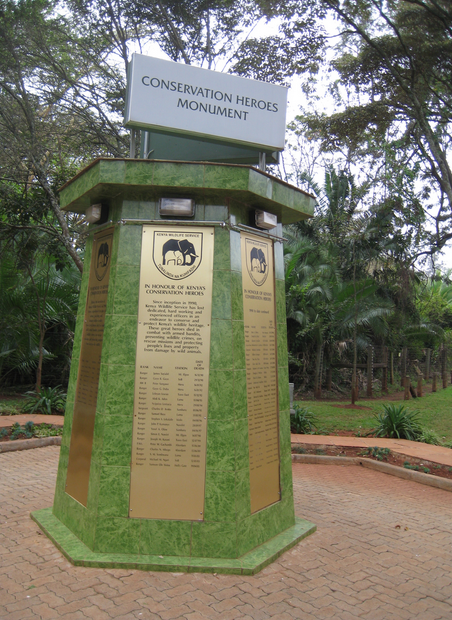
Picture above - KWS monument in honor of Kenyan Wildlife Rangers killed on active duty.
“Being a ranger was not a choice but a calling,” says Stephen Midzi, whose base is Shangoni Post in Kruger. “I was born for this, so had to fulfill what has already been written in my book of life.” Zakouma’s Ndotoingar says simply, “I’m proud of my work.” “Not a single guy has quit,” SANParks’ Jooste notes, adding that without the rangers like Midzi, poaching statistics would be a lot worse. “Look what would happen if we weren’t here.”
Every four days in Africa and around the world a ranger or Anti Poaching Operative is killed in their line of work. Many either face a quick death, are killed by contract shooters or tortured to death. The risks are endless yet wildlife security forces still risk their lives despite pittance [very little monetary income].
As explained International Animal Rescue Foundation Africa is challenging the South African government on shooting to defend of which the organisation wants a clear and precise “shoot to kill” law introduced for wildlife rangers and Anti Poachers not just SANDF. Furthermore I.A.R.F.A. calls on the government to not only authorize rangers to adopt this method of conservation but implement a NO conviction No Legal action clause within contract. Training and more equipment to be supplied to rangers too and rangers with no firearms to be equipped without delay.
International Animal Rescue Foundation Africa doesn’t stand alone either when it comes to such licence to kill policy. Over 90% of South Africans questioned agreed that a shoot to kill policy must be enforced to send a clear and precise message to poachers and king-pins that poaching will not be tolerated within the country. Should the organisation win it could see rangers in other countries authorized a licence to kill. Kenya is one such country on the continent of which KWS - [Kenyan Wildlife Service rangers] not only face death from poachers but are also heavily outnumbered by poachers that are slaughtering rhino and elephants.
The Peoples Verdict - Licence to Kill;
Back in November International Animal Rescue Foundation Africa and India started a public debate with regards to the shoot to kill policy. The debate has thus far seen quite a prolific response from which can be read below. Quite astonishingly we counted a mere dozen or more responses that were against the shoot to kill policy, whereas over 2,000 responses based from our Indian and South African debates called for a shoot to kill policy to be implemented.
Below is a handful of extracted responses for you all to read. You can join the debate by logging onto Facebook and clicking the link below. Alternatively you vote via our poll that will be the second third poll this year of which we will collect all results and begin passing these on to the government and ministries throughout Africa.
Roxanne Cochran stated - I am from South Africa. I agree fully with this notion. If they’re willing to take a life, they should be prepared to be shot down dead too. It’s very sad to see that most rhinos here have had there horns cut down for protection. It’s not natural and it breaks my heart that we have to go to such extremes to protect these beautiful creatures.
Gavin Hastings stated - Hello all, I am a serving soldier of the SANDF; I am just back from my 3rd deployment of 6 months from the Kruger. The problem id like to address is not man power or resources, it is the government of the country of South Africa and Mozambique who are now collaborating in the elimination of the species of rhino thanks to the bureaucratic impasse given to poachers of rhinos. As a soldier I am now “arresting” poachers. It is very difficult to maintain success and morale if you capture a person and he is extradited to re-do his killing the next week. I ask the international community to pressure my government. We need legislation to properly take care of the species survival and give the killers their fair due.
George Chimbai stated - In my country Malawi rhinos were once extincted and were re-introduced in the 1990s with rhinos from South Africa, without that Malawi wouldn’t have been boasting of having the BIG FIVE in its national parks and game reserves. South Africa as a supplier of endangered species to countries where they’re facing extinction I welcome and support the SHOOT TO KILL POLICY of these poachers.
Leisa Cope stated- I agree with shoot to kill only because I don’t see any other option. The consequences of killing animals not only brutally but into extinction needs to be this intense to at least make poachers think twice about what they are doing. If poachers choose to risk their lives then this is their own decision. How sad it is when it comes to this form of action.
Berdine Helderberg stated - Definitely shoot to kill - although, a warning shot might be needed first? (Legal wise..) Poachers know what they are doing, they know it is wrong and because they know they are untouchable, they continue committing these horrible horrible crimes. They simply do not care about the intense suffering of the animals and sometimes the babies too. If you can do it to a defenseless, helpless animal, you will do it to a human being too. Lastly, they will shoot any person that comes in their way, not thinking twice.
Kerryn Hay stated - Shoot to kill definitely. I have no sympathy for poachers even if they are disadvantaged/uneducated and trying to put food on table as some of you have argued - they are making the decision to brutally murder helpless animals and every action has consequences. Kill these criminals! why are we even considering giving them rights when animals have none. If it’s working in India then we must try it because nothing South Africa has done has helped thus far and time is running out while we debate the rights of ruthless criminals! I would prefer to see them die as slowly and painfully as the animals that they murder but let’s shoot to kill and make an example of them!
Heather Smith stated - These poachers are killing innocent animals, so why shouldn’t they expect the same treatment. Rangers are shooting to save these animals lives, poachers are shooting purely for money. You have my support all the way. Shoot to kill!!! Just as the poachers do.
Debbie Olivier stated - South Africa wake up! Allow our rangers to shoot to kill - no questions asked. We have entrusted our wildlife to them - we need to trust them with this too as they are well trained.
Donny De Mars stated - Why shouldn’t there be a shoot to kill law? I mean what makes you think these poachers would not do the same for any unarmed ranger who tries to bring them in. They are no better than drug traffickers and deserve even more severe punishment! A life for a life.
Robert Cates stated - I think a shoot to kill policy/law should be enacted not only to stop dead the ones doing it now, but also to SHOW/deter others thinking about doing it. I don’t think it should be even controlled by the police department… I think it should be an open season sort of policy… that should really put the scare in them.
Whoozie Blue Marlene stated - If you were running away from a bank having stolen a rare pink diamond the. The police would shoot you down dead. Are our rhinos not rare enough, aren’t they our beautiful pink diamonds?. Telling a poacher to stop or else does not work and if it does they are back in business chop chop. If this was installed it would work simply because no one wants to die. God left these animals in our care, so far the care has not been good enough I’m afraid. Protect our Rhino please because enough is enough !!
James Kipterem stated - I agree! Because rangers too are being targeted by these evil minded poachers. Even poachers, they have the same thought of “shoot to kill” whenever they meet rangers. So shoot to kill is the only remedy to a poacher, because, why break the law which we were passing together? that, ‘it is illegal to kill wild animals’. Instead of defending the law you break it. That is very bad. Always law defenders are more than breakers.
Jannette Slabbert stated - Any bad behavior must have real and costly consequences or you will never change it prison is obviously not enough of a penalty so if loosing your life is the price then so be it. It has proven effective in India then I say put the policy in SA too.
Russell Gordon stated - Future generation will blame us for not doing enough to have prevented the total extinction of the Rhino. So to address this now to preserve the Rhino for our future generations poachers and their ring leaders need to feel pain and by that I mean the ultimate sentence, the death penalty.
Laurian Knop stated - I vote shoot to kill poachers in self defense. Poachers are always armed and chose to kill the helpless and innocent. How many rangers have lost their lives to poachers? Self defense is not murder. Protecting those unable to defend themselves is not a criminal offense. Poachers are a scourge that need to be wiped out as they facilitate a bigger epidemic of terrorism, trafficking of drugs and children and general corruption. Why is this even being second-guessed? Do those opposed have something to lose should it be implemented?
Chris Switzer stated - I believe the continuity of a species, far outweighs any issues that might be brought up with regard to a shoot to kill policy. Poaching an endangered species, many of which on the brink of extinction, should be punishable by death.
Annmarie Botelho stated - I think that south Africa should have shoot to kill laws… if it keeps going the way it is we are going to lose are elephants and rhino …. it’s such a cruel trade and there really isn’t any need for it.
Gillian Curley stated - I don’t like the shoot to kill as the poachers are just doing what they are told to do and feed their families BUT something has to be done and if we can’t get the leaders and the buyers then yes sadly I agree to shoot to kill.
Marisol Davila stated - A policy of shoot to kill poachers will be a deterrent for the poaching business. Due to lax policies wildlife numbers are in the brink of extinction. Many economies depend on the tourism that wildlife attracts. Therefore, a harsh policy against poachers and their customers is key if any country wants to strengthen it’s economic survival in the long run. The message need to be loud and clear zero tolerance to poaching, no bits or ifs allow.
To take part in the debate that International Animal Rescue Foundation Africa is running you can comment by clicking here alternatively you can also hit the poll button below and tell us what you want. Please be aware that the poll expires one week from the date of this article of which we will not run another poll.
BEFORE voting please view the video below.
Conclusion;
International Animal Rescue Foundation Africa last year created data models that indicated their worst fears regarding wildlife poaching based on poaching deaths, natural deaths, gestation, deaths of unborn fetus, decreased populations of other larger fauna such as elephants and more. Model data has already shown that South Africa’s poaching rate will continue to increase and has provided very worrying numbers of final statistics supported by defense organisations working hard to stem the flow of poaching.
While none of us wants to see, read or hear of any living creature death - We must send a more stronger and decisive message into Asia and African poaching communities, and while tackling poaching is one thing we’ve also poverty to engage that will take the temptation away from individual opportunistic poachers that kill to fend for their families. Its these very communities that Asian traffickers and king-pins target as they know they are easy prey.
Look at it simply like this. If your living with no food, no electricity, no sanitation and require health support, are barely feeding your family or even yourself and living within a country that is doing little to decrease poverty then you will snap the chance up at anyone given moment to make money. Conservation organisations and leaders of Africa and world leaders must do more to decrease poverty around wildlife parks.
Failing this Data Models have shown that the white rhino will be verging near endangerment by 2017 of which the black rhino could be extinct in under five years within the wild [despite populations increasing]. Furthermore while the continent of Africa is still custodian to thousands of elephants, elephant populations are becoming more fragmented. Yesterday I.A.R.F.A reported a massive decline in South Sudan elephant populations that now stand at some 2,500. Giraffe populations are now at some 40,000 for the entire continent of Africa.
Bottom line is should Africa lose vast swathes of her wildlife then tourism will be affected too. Tourism brings in billions for the entire continent of Africa of which Africa’s wildlife is seen as the number one tourist attraction. A large number of countries depend on tourism for the economic growth. A recent study done for DFID concluded: “While poor countries only command a minority share of the international tourism market, tourism can make a significant contribution to their economies.
Eighty percent of the world’s poor (below US$1 a day) live in 12 countries. In 11 of these, tourism is significant and/or growing. Of the 100 or so poorest countries, tourism is significant (accounting for over 2% of GDP or 5% of exports) in almost half the low income countries and almost all the lower-middle income countries.” Using these same criteria and 1996 data, tourism is “significant” in an impressive number of African countries: Benin, Botswana, Burkina Faso, Cape Verde, Comoros, Djibouti, Eritrea, Ethiopia, Gambia, Ghana, Kenya, Madagascar, Mauritius, Namibia, Niger, Senegal, Sao Tome & Principe, Seychelles, Sierra Leone, South Africa, Swaziland, Tanzania, Togo, Uganda, Zimbabwe. Zambia and Mali just missed the cutoff in 1996.
According to the World Tourism Organization (WTO), Africa as a whole attracts just fewer than 4% of total world tourists and accounted for 2.0% of international tourism receipts in 1997. Of the Sub-Saharan countries, only South Africa is listed in the top forty tourism destinations worldwide, where it was 26th in 1997. The WTO calculated [1996] that Africa had just over 3% of world accommodation capacity (796,000 beds). The Africa region showed the strongest expansion in arrivals of any world region in 1997, up 8.1% over 1996. Furthermore, during the 1988-97 decade, Africa had an average annual growth of 7.2% in visitor arrivals, only slightly lower than East Asia/Pacific, which had the highest growth rate of all regions though from a much higher base than Africa. The average annual growth rate for tourist arrivals worldwide has averaged 5.0% for the past decade.
However - the number of tourists now arriving in SSA has grown over 300% since 1990, with 2012 marking a high of 33.8 million tourists who visited the region. Income generated from tourism has also climbed: Receipts from hotels, tours and other attractions in 2012 amounted to over US$36 billion and directly contributed just over 2.8% to the region’s GDP, according to the report issued by the World Bank back in 2013.
Wild animals are probably one of the first things people think of when asked about Africa. Seeing all the documentaries on television, we can only wonder and watch in awe as these mighty creatures roam the plains and jungles. Many are now protected in reserves and tourists can venture out on varying safaris to watch them in their nature habitats. What an incredible experience for both the amateur and professional photographer! Zambia holds the most natural of parks because the area is not accessible between November and March due to the waterways. Since the animals, plants, birds, and other natural elements are left alone, the area is truly spectacular when viewed each year after this rejuvenation period.
Safari rates as number four on many tour guide questionnaires when asking tourists why they wish to visit Africa. So in all if we continue to see such a vast decline in wildlife and lack of hard core enforcement we’ll most certainly see a copious decline in tourism revenue. I don’t need to explain what that will spell either.
International Animal Rescue Foundation has been challenged by only Humans Rights Christian Organisation of which stated we should not lobby or enforce a licence to kill poachers. All that can be said to the Human Rights players is that when there are no animals left, and revenue is seen as shrinking because of this then the Human Rights organisations can visit Africa and tackle more violent crime, lack of any employment, rape, murder, and more.
The time to act is now and not tomorrow. Stand by International Animal Rescue Foundation and help us enforce a shoot to kill policy within South Africa, Kenya and Tanzania.
Thanks
Board of Directors for External Affairs - Ead
Chief Executive Officer of Environmental Projects Africa - Michael L. Rooste
Chief Environmental Officer & CEO Dr Jose C Depre
Chief Environmental Registrar Europa - J. F. Williamson
External Affairs and Lead Investigation Officer - Vincent Van der spuy
You can help us by donating, to donate click the picture below that will take you to our donation application on Facebook. Alternatively you can donate to our communications site listed hereto at
www.international-animalrescue-foundation.org.uk
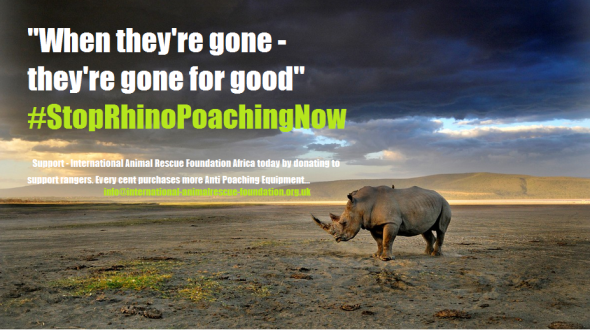
South Africa: President Says Dogs Should Not Be Mans Best Friend
According to the South African president Jacob Zuma, owning a pet is part of ‘white culture’ and people should focus on family welfare instead. He says a dog should not be man’s best friend. The president’s statement, which was made a little over a year ago was met by anger from many pet lovers.
His presidential office tried to smooth things over by telling Star news he was encouraging “the previously oppressed African majority” to uphold its own culture.
“Will I become ‘more African’ if I kick my dog, President Zuma,” asked an angry pet owner.
One humorist wrote: “Well, that pretty much rules out that photo opportunity with Zuma, the Obamas and their pet dog, Bo, in the White House.”
During his speech to an appreciative crowd in his home province KwaZulu-Natal, the president said people who love dogs more than people have a “lack of humanity” and that some people are trying in vain to “emulate whiteness.”
“Even if you apply any kind of lotion and straighten your hair, you will never be white,” said the president.
Star news said he gave examples of people loving animals more than other human beings — letting a dog sit in the cab of a truck while a worker has to sit in the back in the rain, or rushing an animal to the veterinarian while ignoring sick relatives or workers.
Saynotodogmeat.Net is pleased to announce South Africa is participating in our Global March For Dogs and Cats In The Meat Trade!
We invite all South African pet lovers to join our march and bring your family and pets too, April 4th, 2015.
Africa hosts a lucrative dog and cat meat trade which has been kept in the shadows for too long. We are fighting to end the cruel pet meat trade in Africa and Asia. People from many nations will be marching with us, as one collective voice and we hope you will join us too. Please go ahead and mark your calendar. Join us and become the voice of the voiceless.
For information on our global march or how you can help us, please email us: [email protected].
Thank you for reading,
Michele Brown.
GLOBAL MARCH
Saturday April 4th, 2015 Saynotodogmeat.Net is hosting a Global March for dogs and cats in the live meat trade. Please march with us, in your country. It will be an orderly and peaceful march but we need more ‘demonstration leaders.’ If you can help us, PLEASE EMAIL: [email protected]
Bring your family, children, pets and banners; we need as many people as possible, worldwide. Please mark your calendar and join our march. If you haven’t already done so, please click the box to let us know you are coming: https://www.facebook.com/events/294347744053559/
WE ARE NOW ACCEPTING DONATIONS
Saynotodogmeat.Net is now accepting donations: PLEASE MARK ALL DONATIONS “SAY NO TO DOG MEAT.NET” https://www.facebook.com/SayNoToDogMeat/app_117708921611213
No donation is too small and we are very appreciative of your help and support. Very soon we will be writing a full article outlining where donations will be used. You will receive an electronic receipt and we will too, which we will keep for historical data purposes. NO DONATION will be used to produce clothing with logos on, badges or banners. Donations are NOT for the directors. ALL MEMBERS FUND THEMSELVES.
PLEASE CONTINUE TO SIGN AND SHARE OUR SAYNOTODOGMEAT.NET PETITIONS; WHEN COMPLETED THEY’LL BE WILL BE HAND DELIVERED
PETITION FOR SOUTH KOREA
https://www.change.org/en-GB/petitions/president-geun-hye-park-take-dog-cat-meat-off-the-menu
PETITION FOR VIETNAM and THAILAND ANTI-SMUGGLING
https://www.causes.com/actions/1764795-a-petition-to-president-truong-tang-sang-moj-prime-minister-yingluck-shinawatra
PETITION FOR HEALTH MINISTER OF VIETNAM
https://www.causes.com/campaigns/71258-minister-of-public-health-thi-kim-tien
PETITION FOR NAGALAND
https://www.change.org/en-GB/petitions/additional-chief-secretary-take-dog-meat-of-nagaland-menu
PETITION TO BAN THE TRADE IN NIGERIA
https://www.change.org/en-GB/petitions/governor-of-lagos-hon-babatunde-fashola-ban-the-nigerian-dog-meat-trade-lagos
LETTER TO THE PRESIDENT OF THE PHILIPPINES
http://saynotodogmeat.net/2014/04/04/email-the-philippines-president-to-end-the-dog-meat-trade/
PLEASE SEND TO THE MUSLIM COUNCIL
http://saynotodogmeat.net/2014/01/17/open-email-to-the-muslim-council-of-great-britain/
PLEASE HELP THE PEOPLE OF TURKANA HERE
http://saynotodogmeat.net/2014/01/31/turkana-africa-emergency-aid-letter/
EMAIL THE GOVERNOR OF NIGERIA: New Address: [email protected]
http://saynotodogmeat.net/2013/12/03/email-excellency-dr-honorable-alausa-excellency-honorable-babatunde-fashola/
JOIN THE WORLDWIDE GLOBAL EVENT HERE TODAY
PLEASE EMAIL US A.S.A.P FOR INFORMATION ON HOW YOU CAN HELP. SATURDAY 4TH APRIL 2015 – TIME TO MARCH FOR DOGS AND CATS IN THE MEAT TRADE.
JOIN HERE https://www.facebook.com/events/294347744053559/ SHARE EVERYWHERE WILDLY
SayNoToDogMeat.Net FACEBOOK and TWITTER
Email: [email protected]
#saynotodogmeat
ALL RIGHTS RESERVED
PLEASE CREDIT THE ORGANISATION WHEN SHARING
Dog Meat Is Big Business in Nigeria
In a city where animal activists are almost invisible, dogs are crammed into small cages and trucked into Calabar from North Nigeria, to the waiting hands of dog butchers who hack them to death for dog meat.
Nigeria has a booming dog meat trade and the city of Calabar is one of it’s biggest hot-spots, where dog meat is openly sold on street corners and eaten by a broad spectrum of people who refer to it as ‘4o4.’ Chunks of dog meat can sell for as little as a hundred naira (less than a dollar), while a whole pot of dog meat can sell for as much as N14,000 or $87.00.
In Calabar, eating dog meat is seen a way of relaxing for some people and they can’t see whats wrong with it. However, people in Calabar who are against eating dog meat say “It is inhuman to eat up a pet, especially a dog which can become a family member.” Dog eaters reply “It is something as old as our culture. Our forefathers ate dog meat and we grew up learning to eat dog meat and by all standards, it is ok”.
Dog eaters far outnumber non-dog eaters in Calabar where its pet meat trade is lucrative and no matter how many dogs they kill, there’s always buyers waiting to eat them.
Weekends are the busiest time for slaughtering and eating dogs, especially Sundays when people in Calabar like to get together with family and loved ones and relax and eat dog meat.
Interestingly, women in Calabar eat just as much dog meat as men. Throughout Asia, dog meat is eaten mainly by men and women are shunned from eating it for a variety of reasons, mainly because men believe dog meat boots a man’s virility and is therefore dangerous for women to indulge in.
Dog meat used to be restricted to certain areas in Calabar and was mainly served with palm wine. Due to clever marketing, dog meat in Calabar is now a mainstream food which is served like any other restaurant food, with multiple choices of side dishes and beverages.
Just like in Asia a few decades ago, dog meat has gone from being eaten secretly to chic restaurant food that’s accepted everywhere, thanks to some clever marketing by dog traders, dog butchers and dog meat cooks.
In the same way Saynotodogmeat.Net are fighting Asia’s dog and cat meat trade, we will continue to fight Africa’s cruel pet meat trade too. We won’t stop until the dog and cat meat trade is brought to an END in Africa and Asia.
Thank you for reading,
Michele Brown.
GLOBAL MARCH
Saturday April 4th, 2015 Saynotodogmeat.Net is hosting a Global March for dogs and cats in the live meat trade. Please march with us, in your country. It will be an orderly and peaceful march but we need more ‘demonstration leaders.’ If you can help us, PLEASE EMAIL: [email protected]
Bring your family, children, pets and banners; we need as many people as possible, worldwide. Please mark your calendar and join our march. If you haven’t already done so, please click the box to let us know you are coming: https://www.facebook.com/events/294347744053559/
WE ARE NOW ACCEPTING DONATIONS
Saynotodogmeat.Net is now accepting donations: PLEASE MARK ALL DONATIONS “SAY NO TO DOG MEAT.NET” https://www.facebook.com/SayNoToDogMeat/app_117708921611213
No donation is too small and we are very appreciative of your help and support. Very soon we will be writing a full article outlining where donations will be used. You will receive an electronic receipt and we will too, which we will keep for historical data purposes. NO DONATION will be used to produce clothing with logos on, badges or banners. Donations are NOT for the directors. ALL MEMBERS FUND THEMSELVES.
PLEASE CONTINUE TO SIGN AND SHARE OUR SAYNOTODOGMEAT.NET PETITIONS; WHEN COMPLETED THEY’LL BE WILL BE HAND DELIVERED
PETITION FOR SOUTH KOREA
https://www.change.org/en-GB/petitions/president-geun-hye-park-take-dog-cat-meat-off-the-menu
PETITION FOR VIETNAM and THAILAND ANTI-SMUGGLING
https://www.causes.com/actions/1764795-a-petition-to-president-truong-tang-sang-moj-prime-minister-yingluck-shinawatra
PETITION FOR HEALTH MINISTER OF VIETNAM
https://www.causes.com/campaigns/71258-minister-of-public-health-thi-kim-tien
PETITION FOR NAGALAND
https://www.change.org/en-GB/petitions/additional-chief-secretary-take-dog-meat-of-nagaland-menu
PETITION TO BAN THE TRADE IN NIGERIA
https://www.change.org/en-GB/petitions/governor-of-lagos-hon-babatunde-fashola-ban-the-nigerian-dog-meat-trade-lagos
LETTER TO THE PRESIDENT OF THE PHILIPPINES
http://saynotodogmeat.net/2014/04/04/email-the-philippines-president-to-end-the-dog-meat-trade/
PLEASE SEND TO THE MUSLIM COUNCIL
http://saynotodogmeat.net/2014/01/17/open-email-to-the-muslim-council-of-great-britain/
PLEASE HELP THE PEOPLE OF TURKANA HERE
http://saynotodogmeat.net/2014/01/31/turkana-africa-emergency-aid-letter/
EMAIL THE GOVERNOR OF NIGERIA: New Address: [email protected]
http://saynotodogmeat.net/2013/12/03/email-excellency-dr-honorable-alausa-excellency-honorable-babatunde-fashola/
JOIN THE WORLDWIDE GLOBAL EVENT HERE TODAY
PLEASE EMAIL US A.S.A.P FOR INFORMATION ON HOW YOU CAN HELP. SATURDAY 4TH APRIL 2015 – TIME TO MARCH FOR DOGS AND CATS IN THE MEAT TRADE.
JOIN HERE https://www.facebook.com/events/294347744053559/ SHARE EVERYWHERE WILDLY
SayNoToDogMeat.Net FACEBOOK and TWITTER
Email: [email protected]
#saynotodogmeat
ALL RIGHTS RESERVED
PLEASE CREDIT THE ORGANISATION WHEN SHARING

